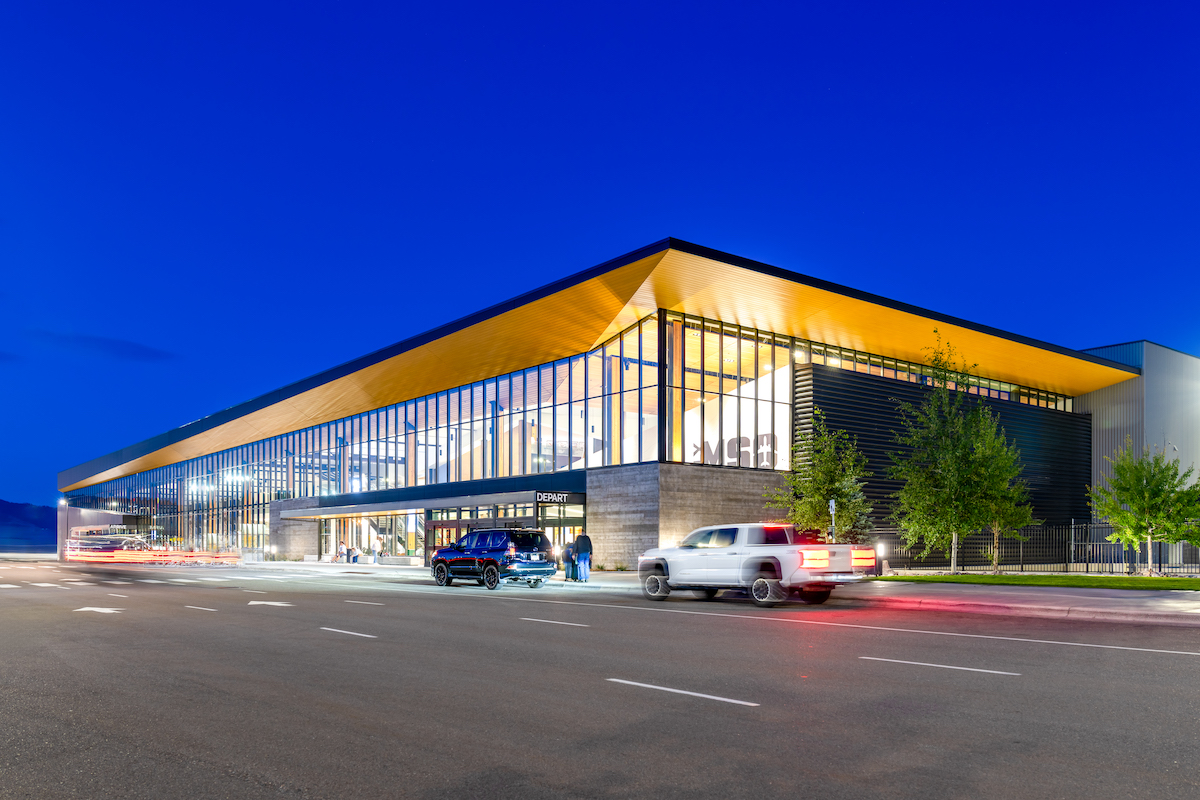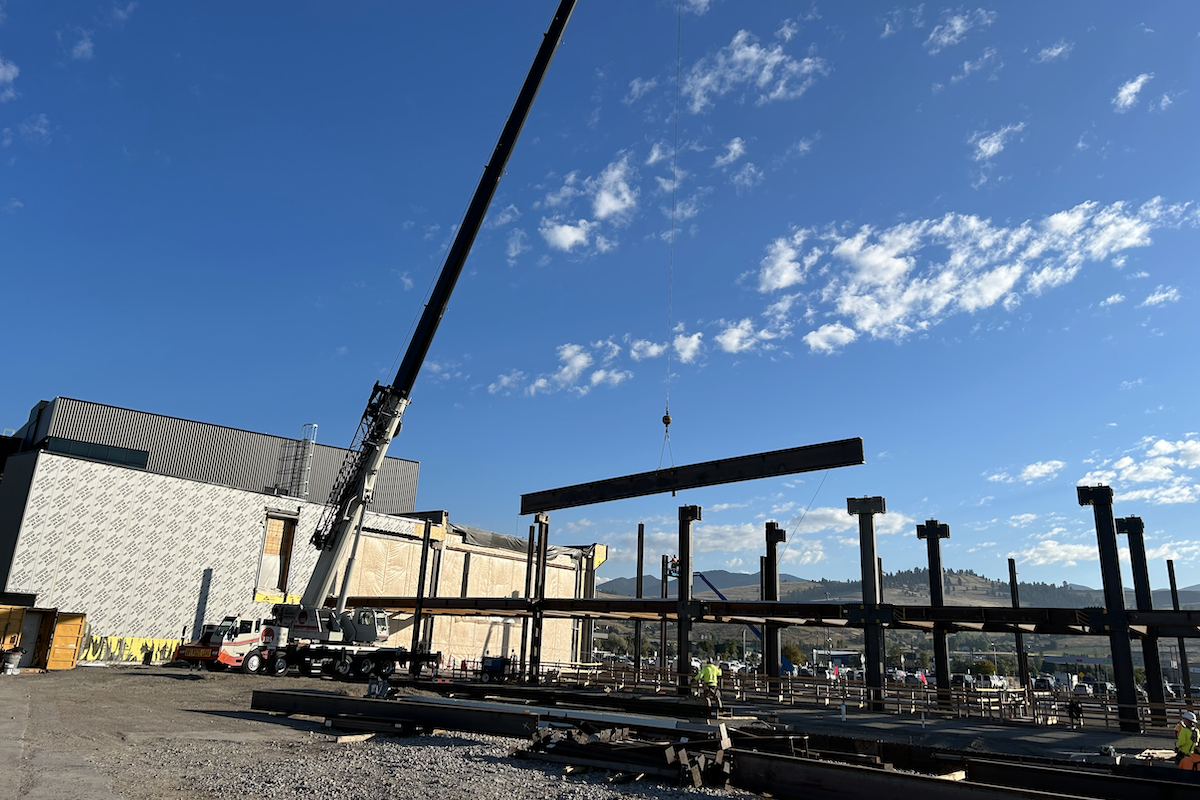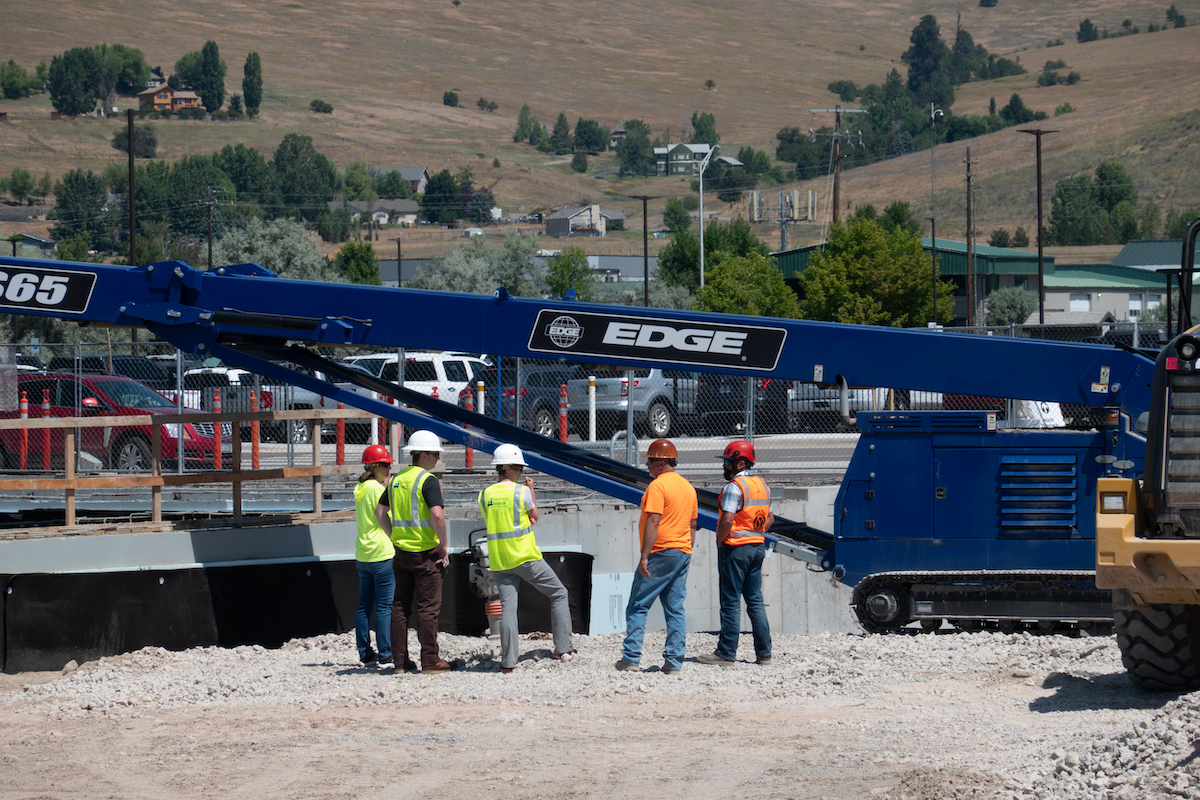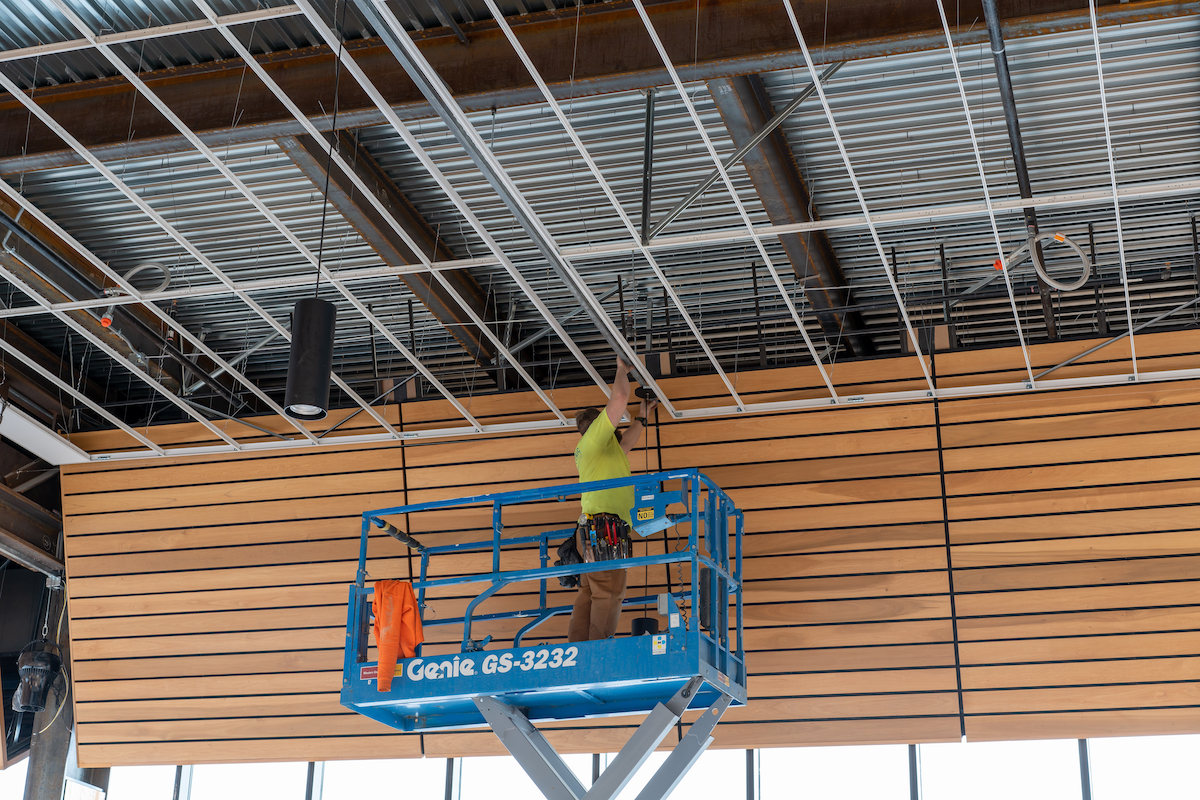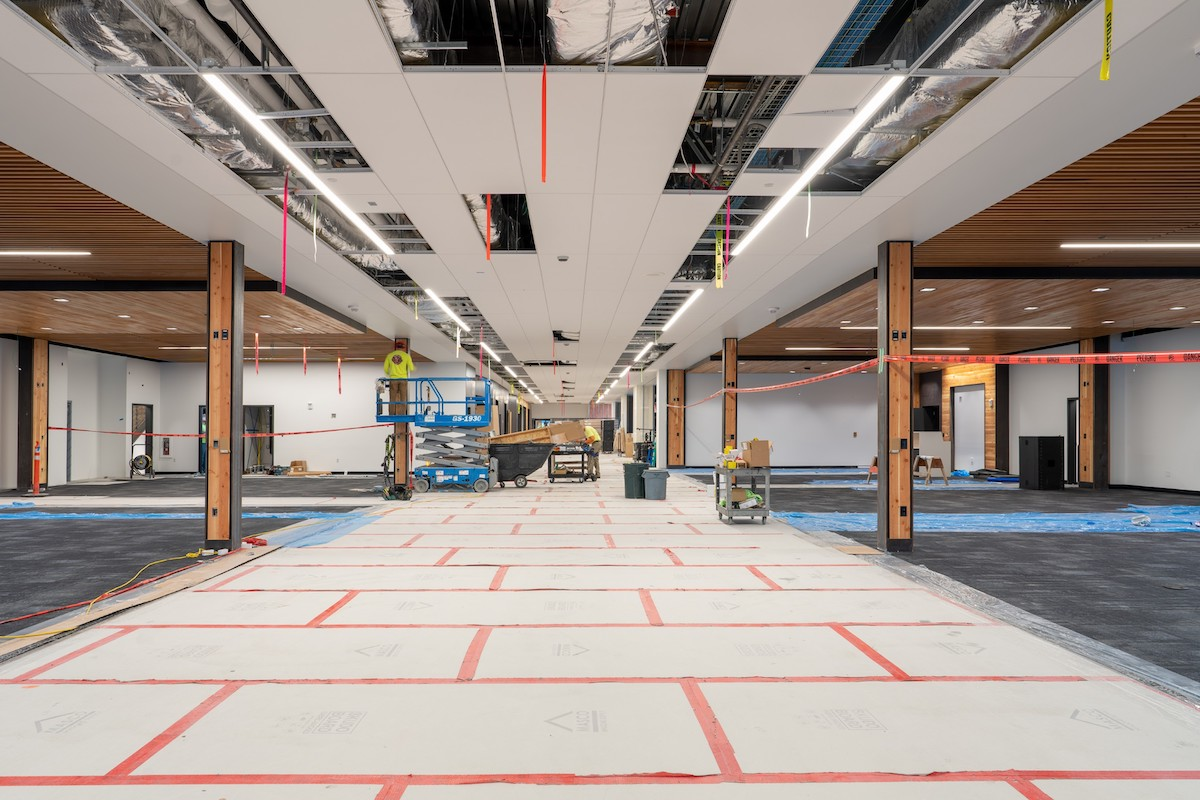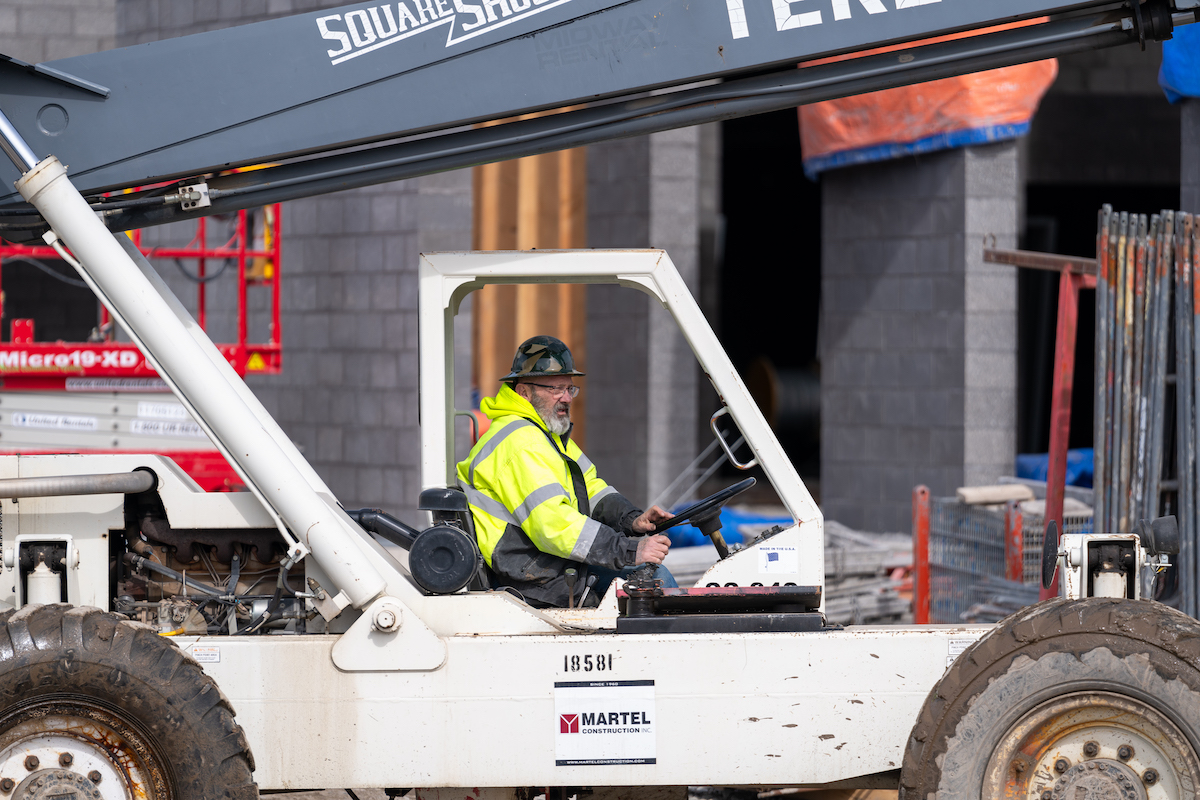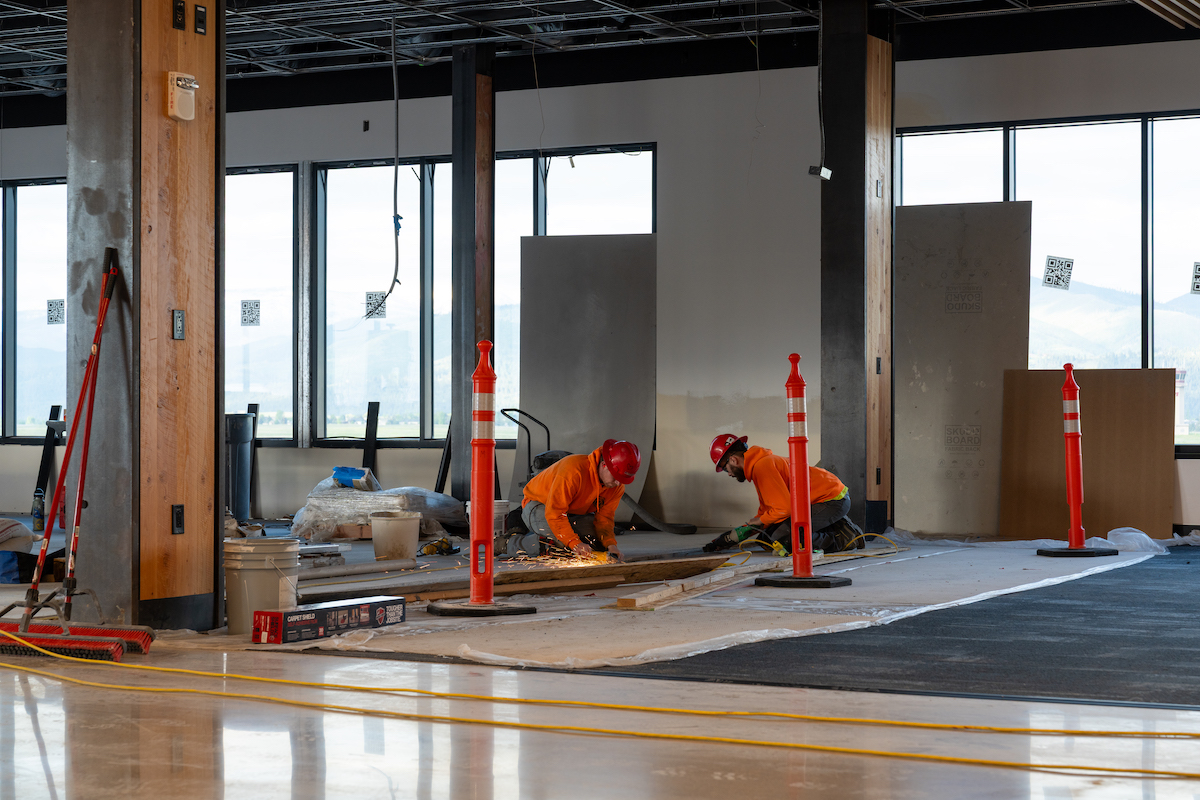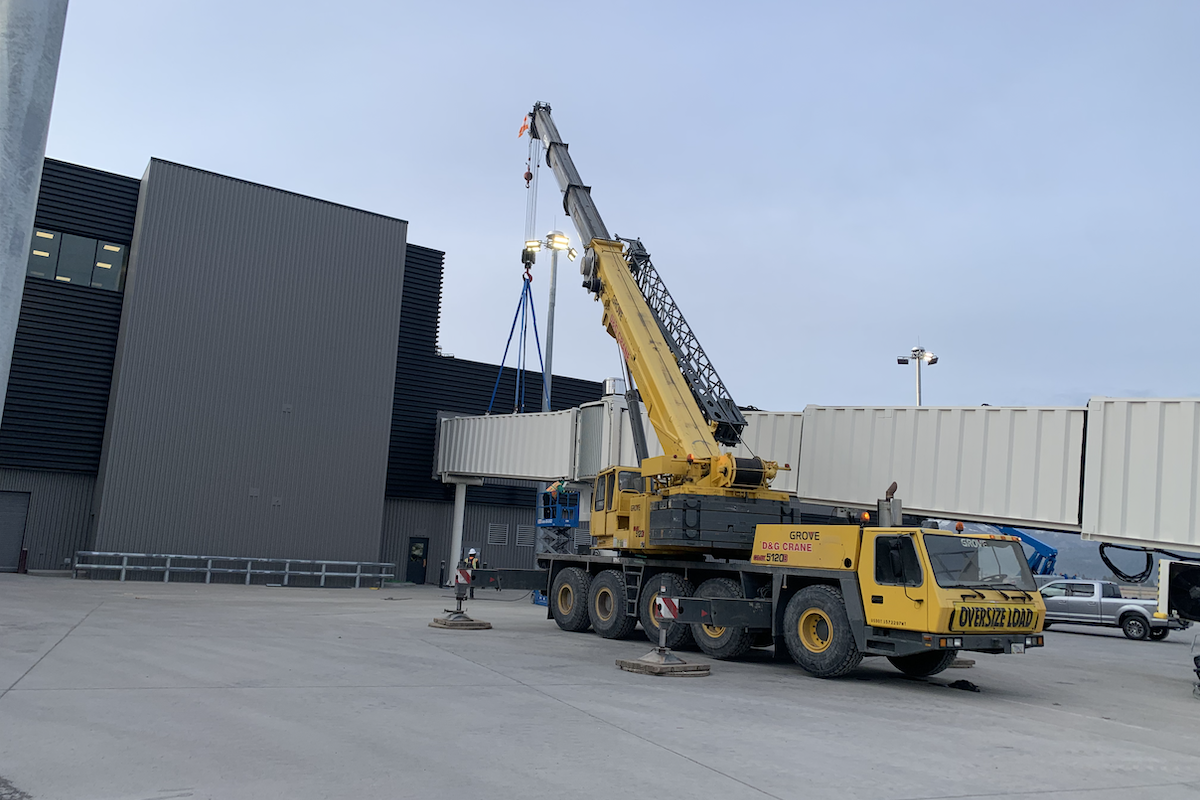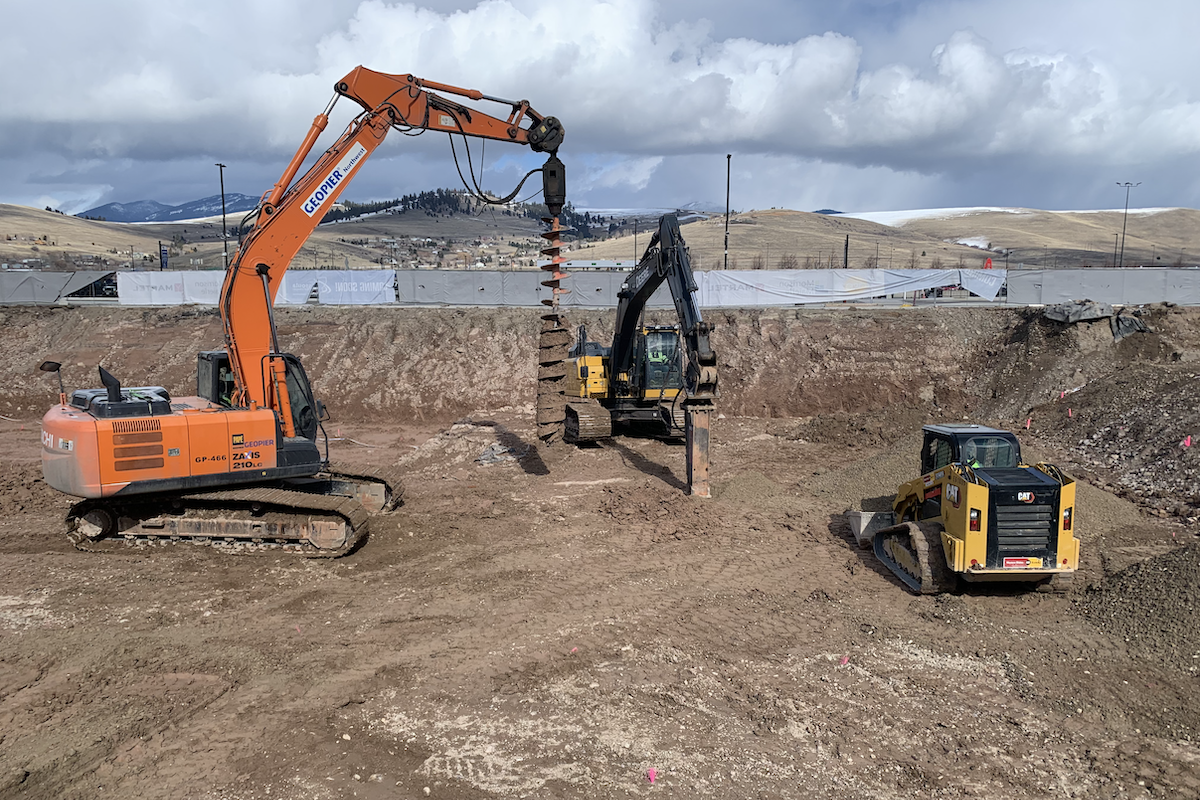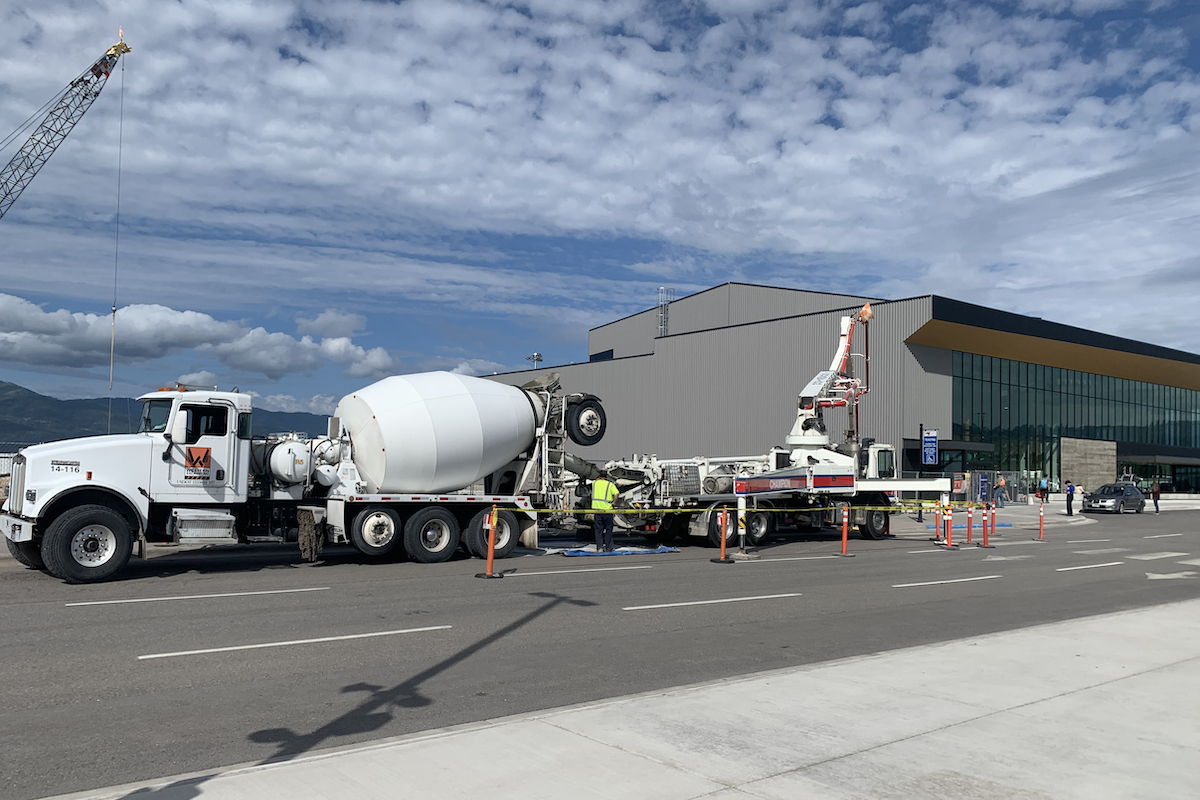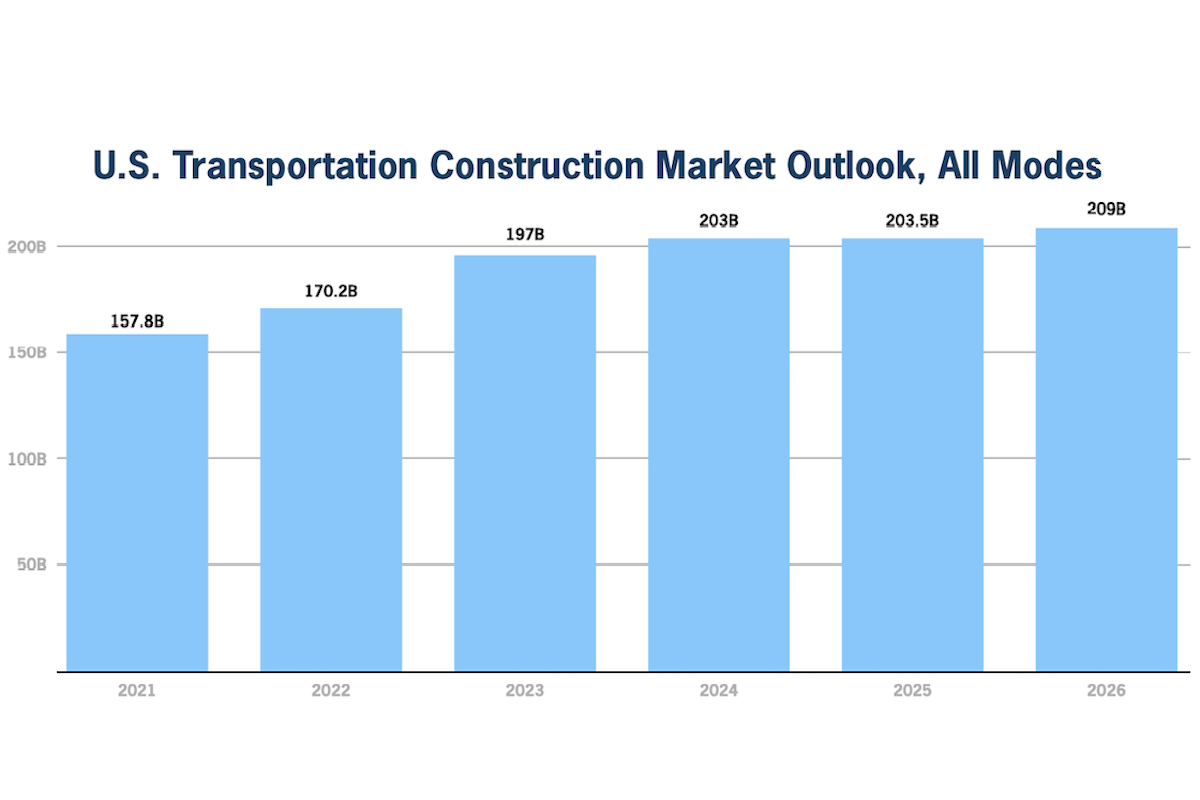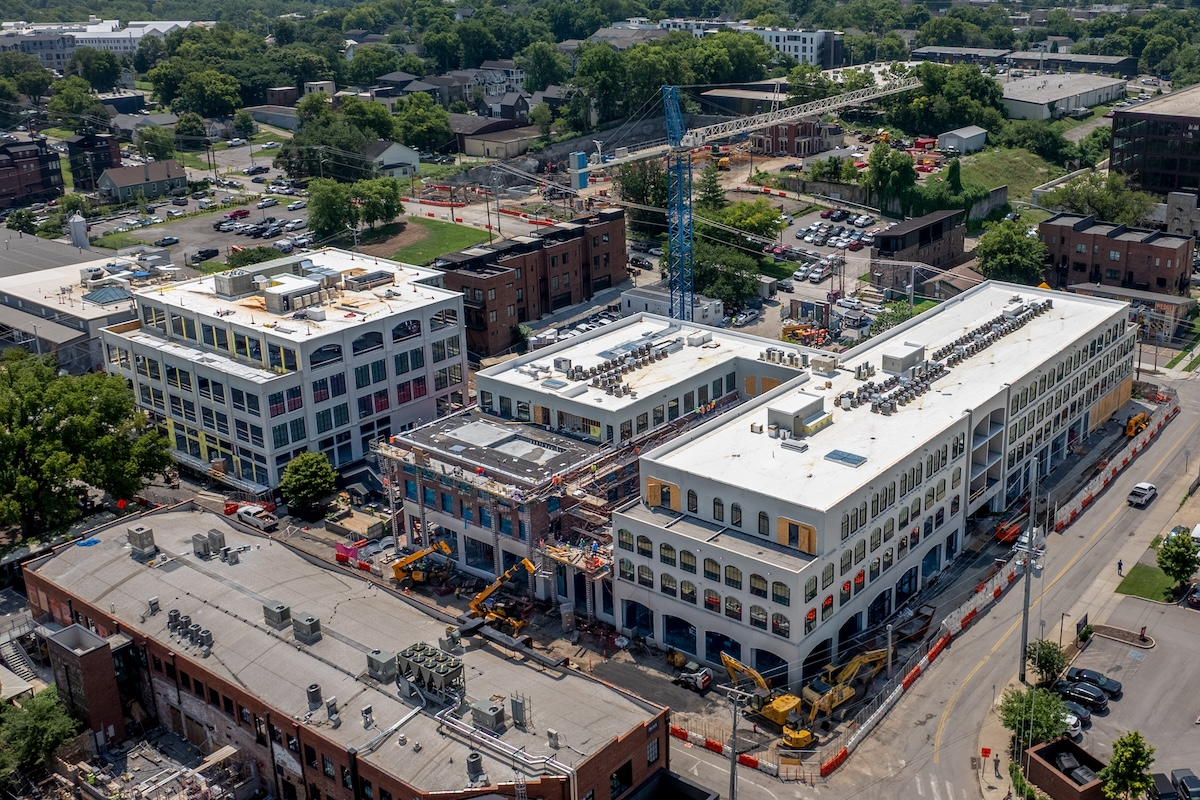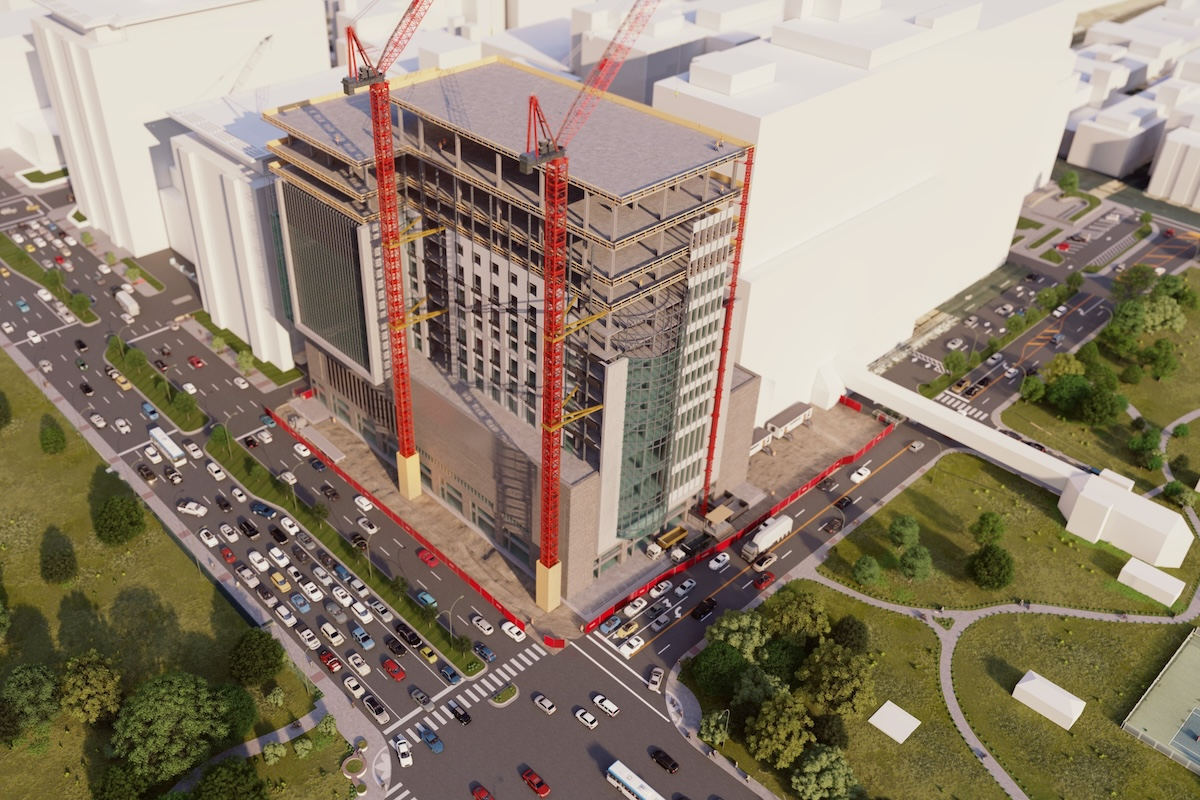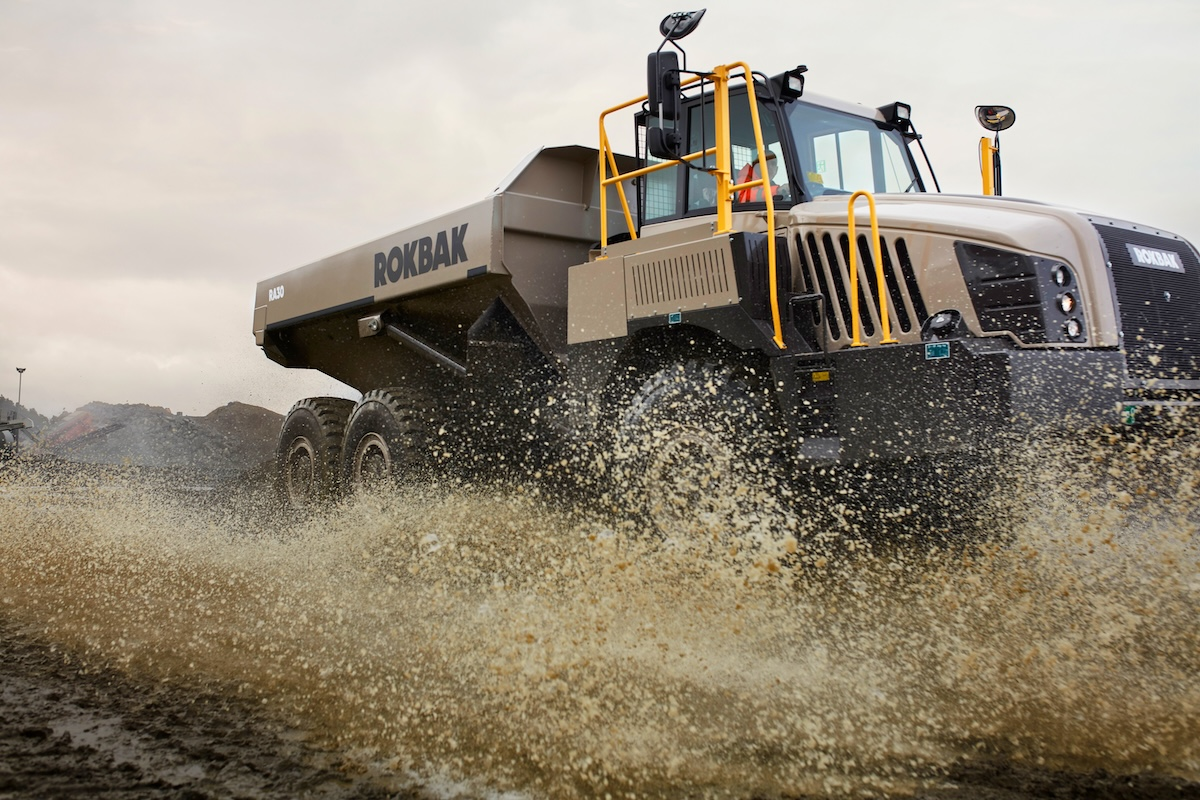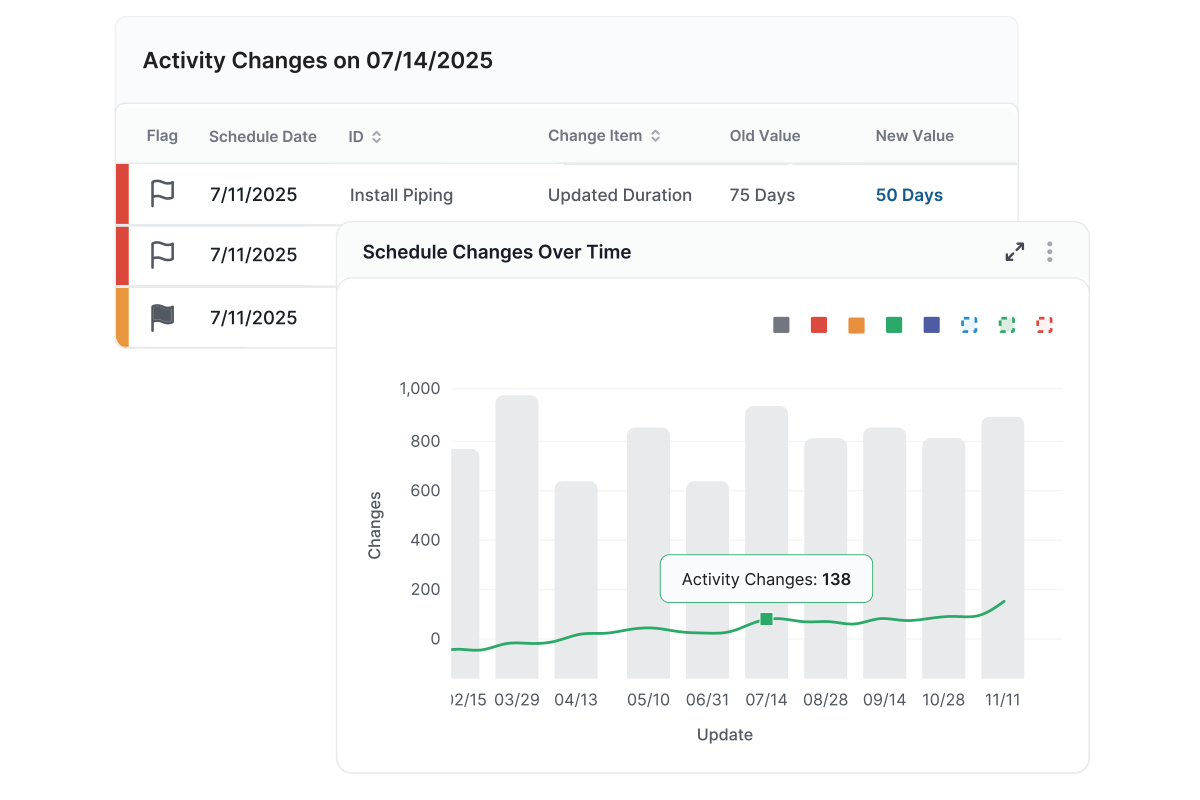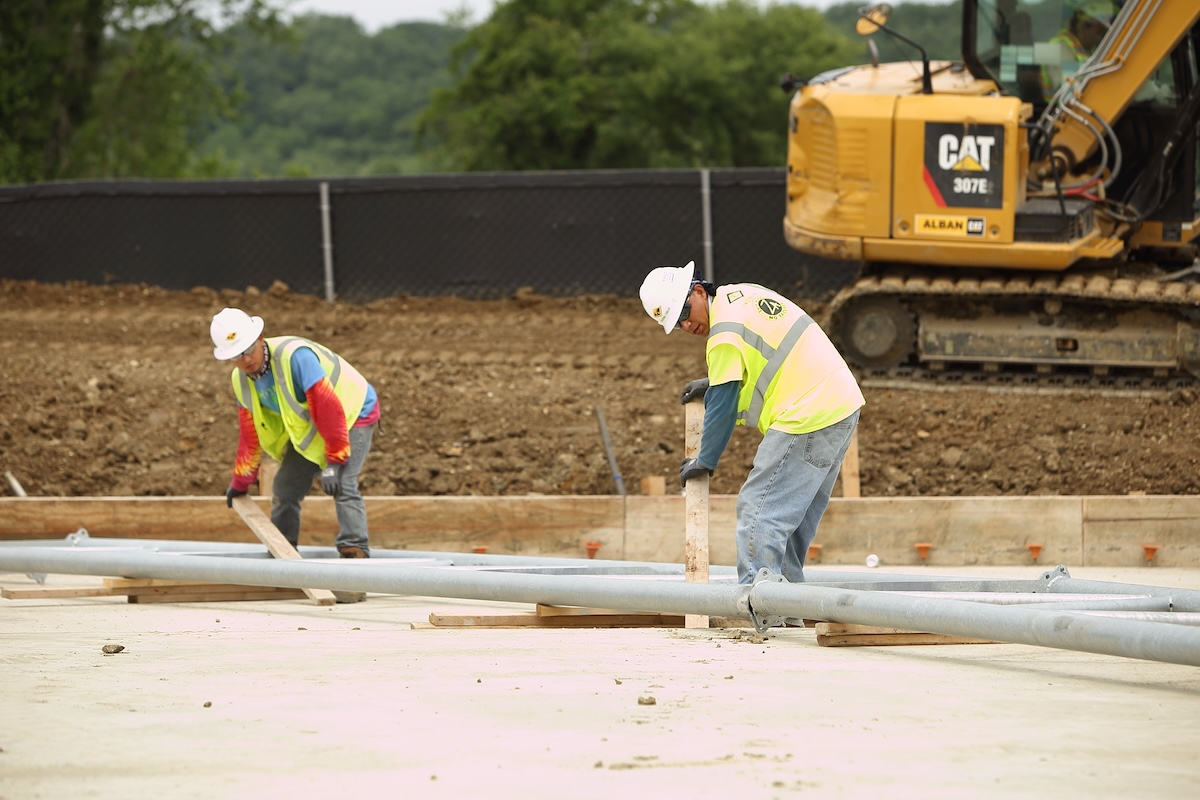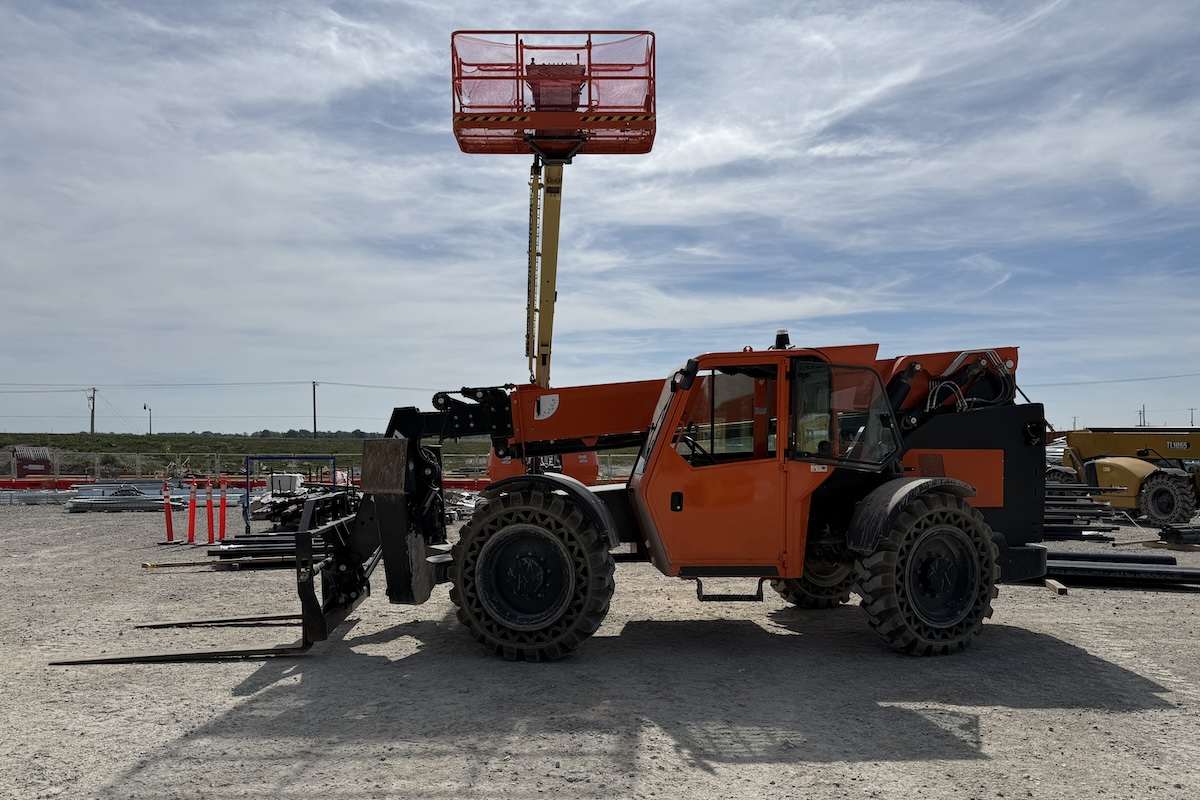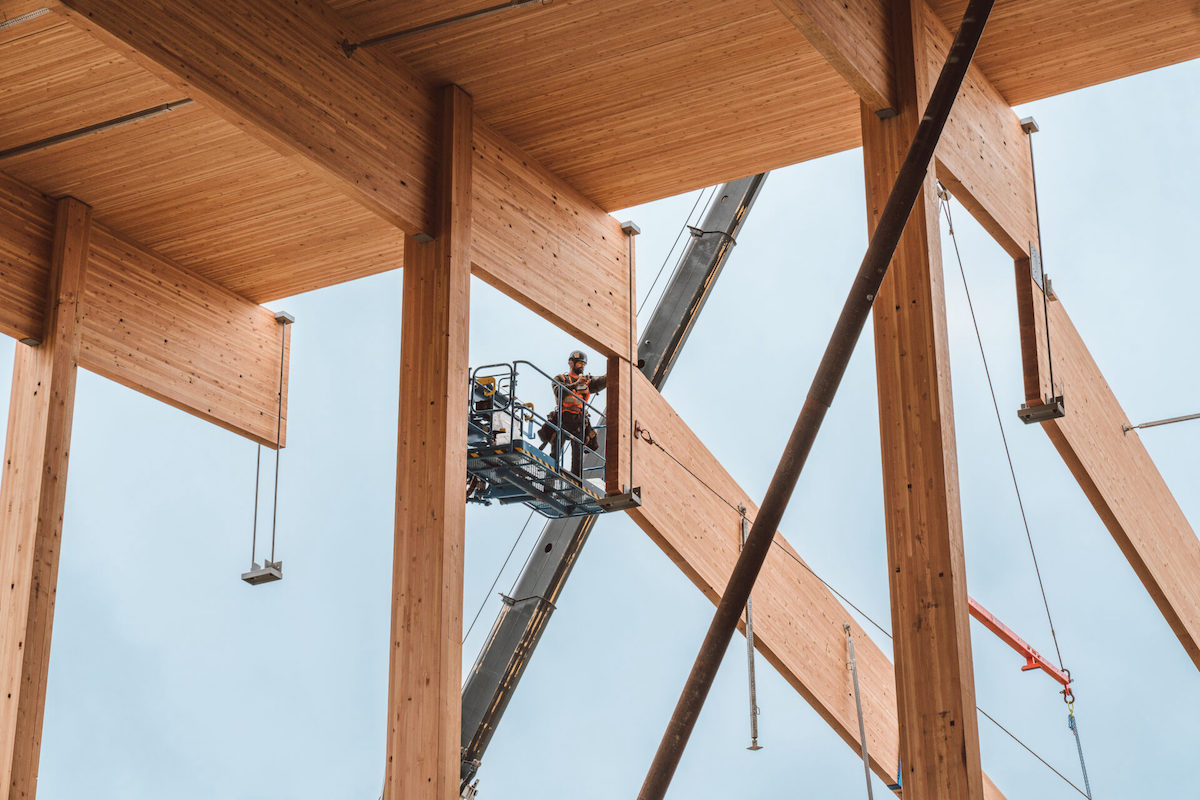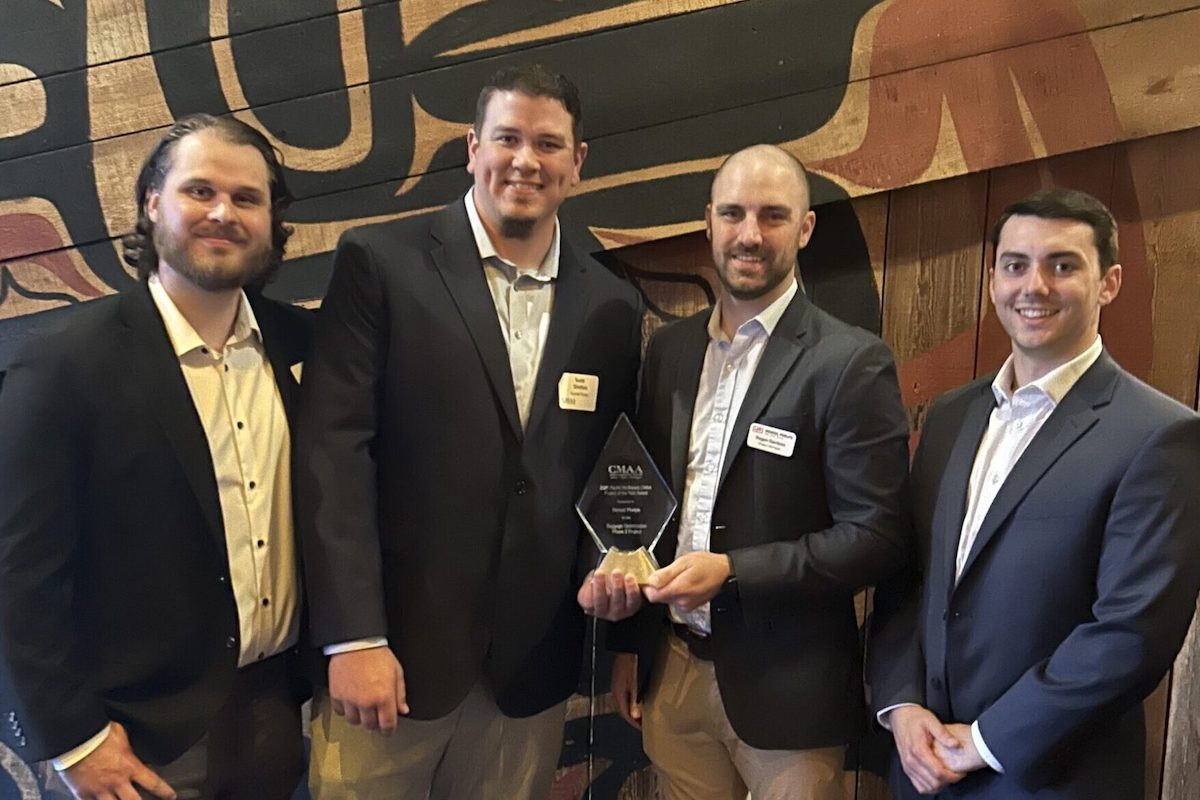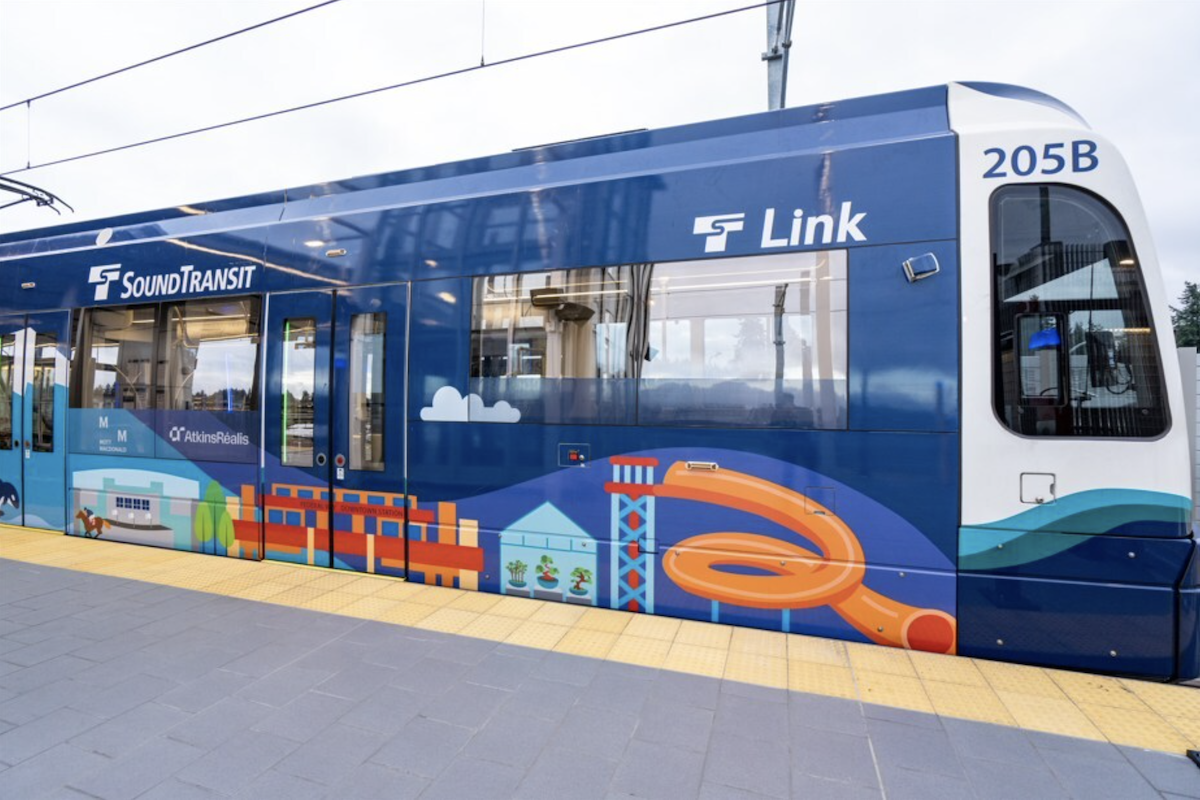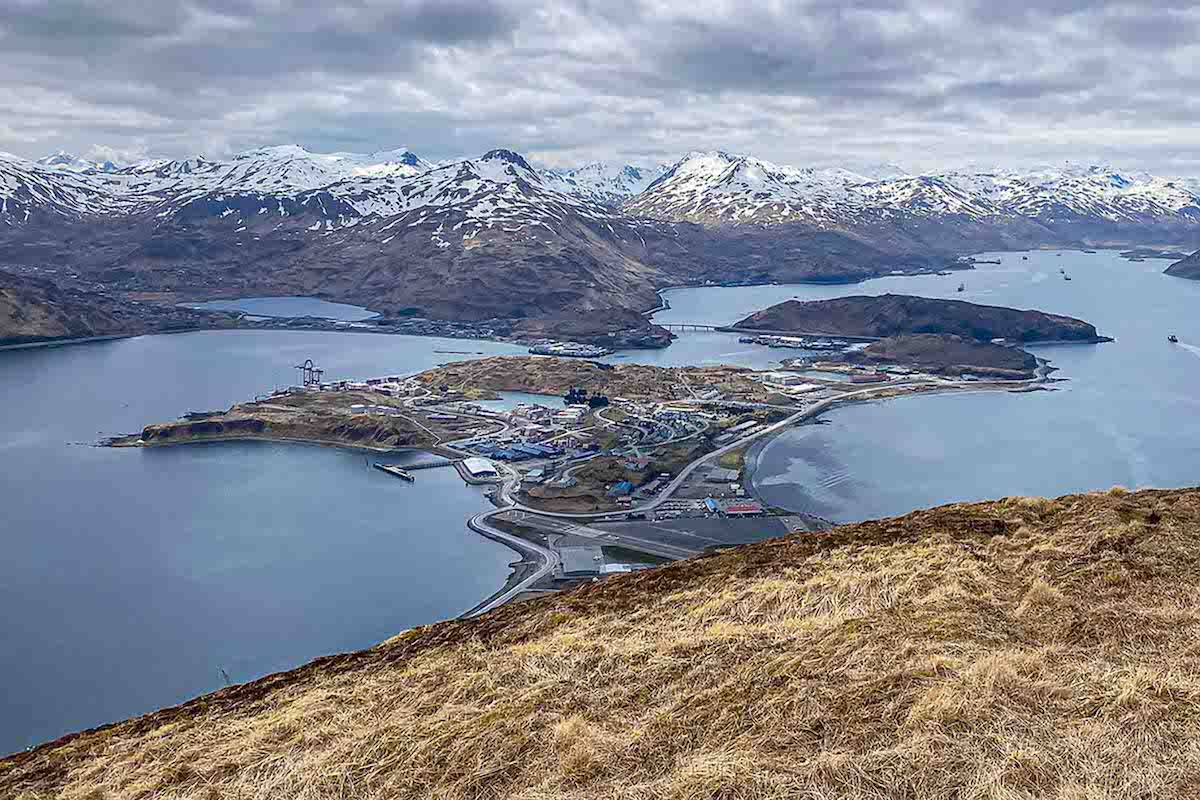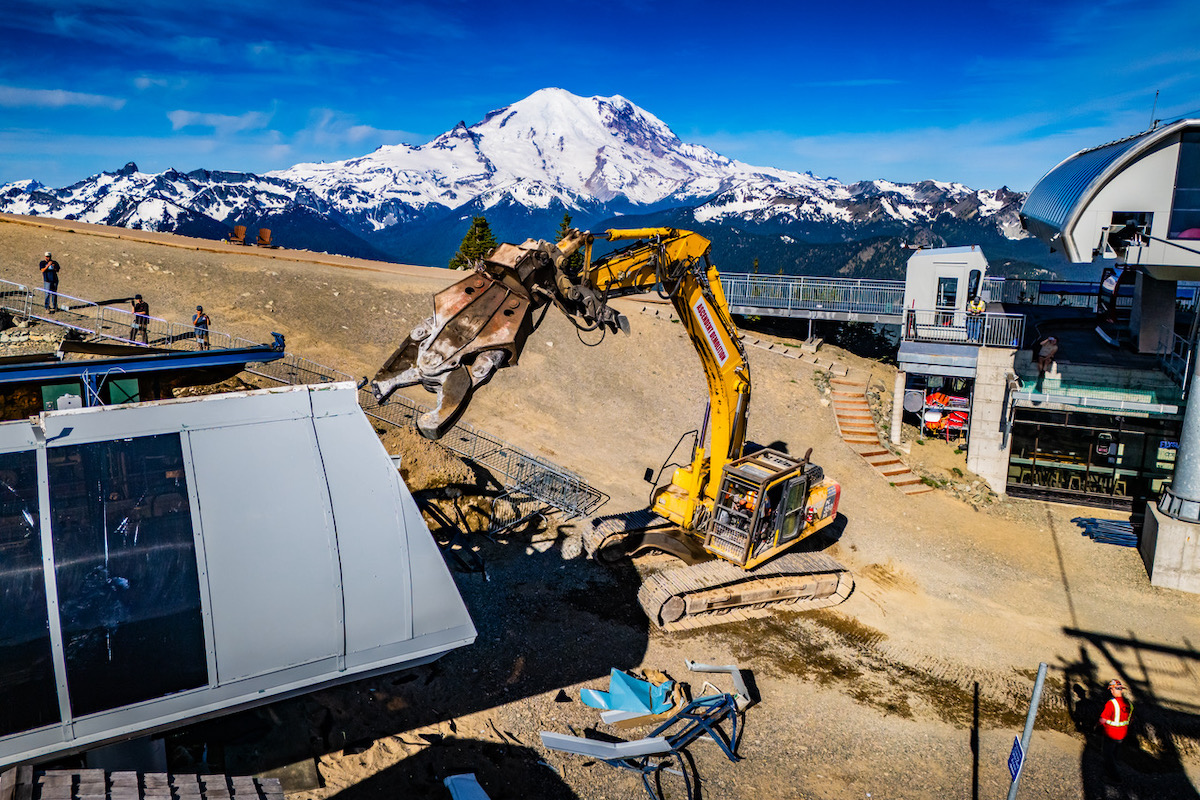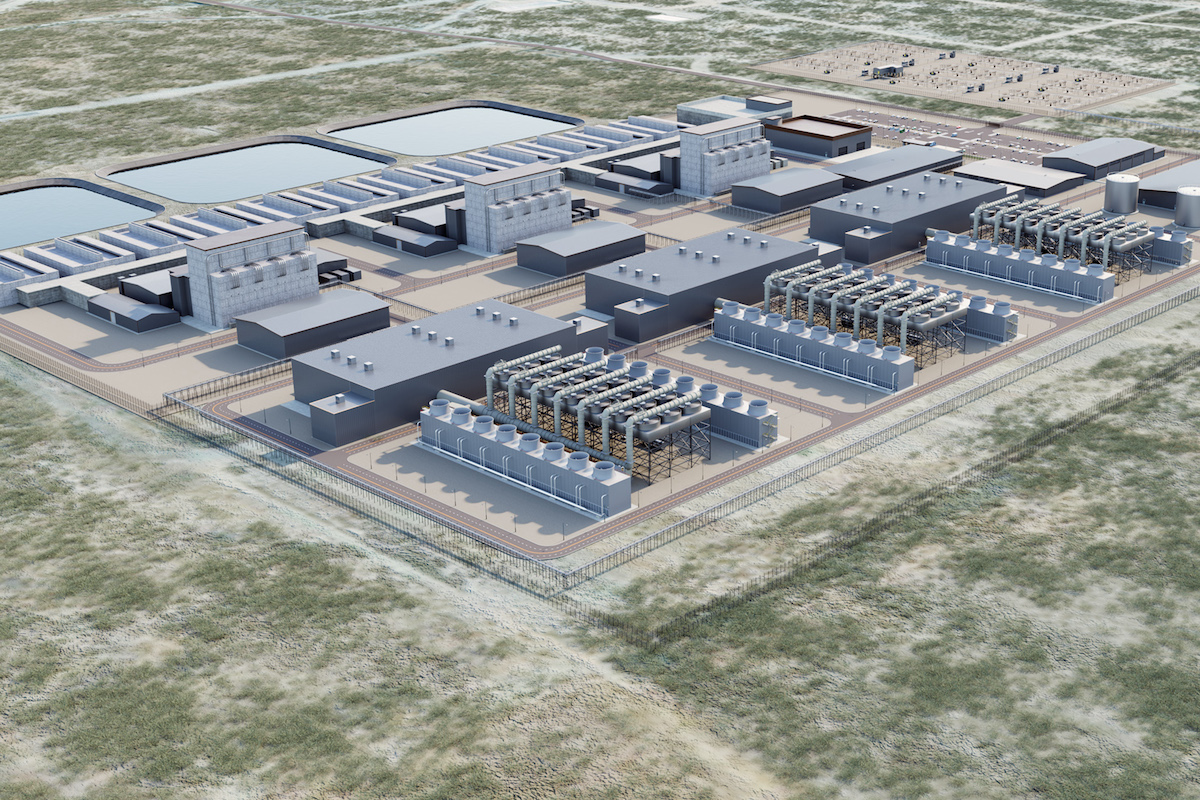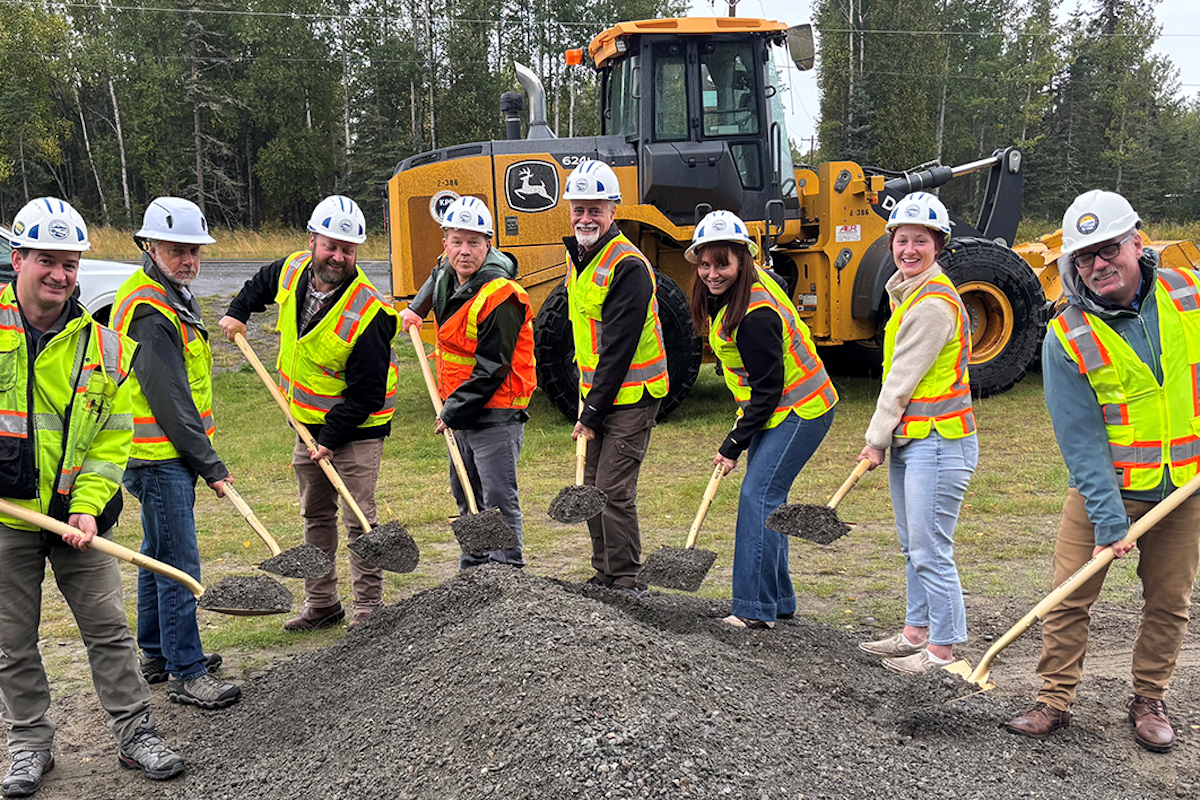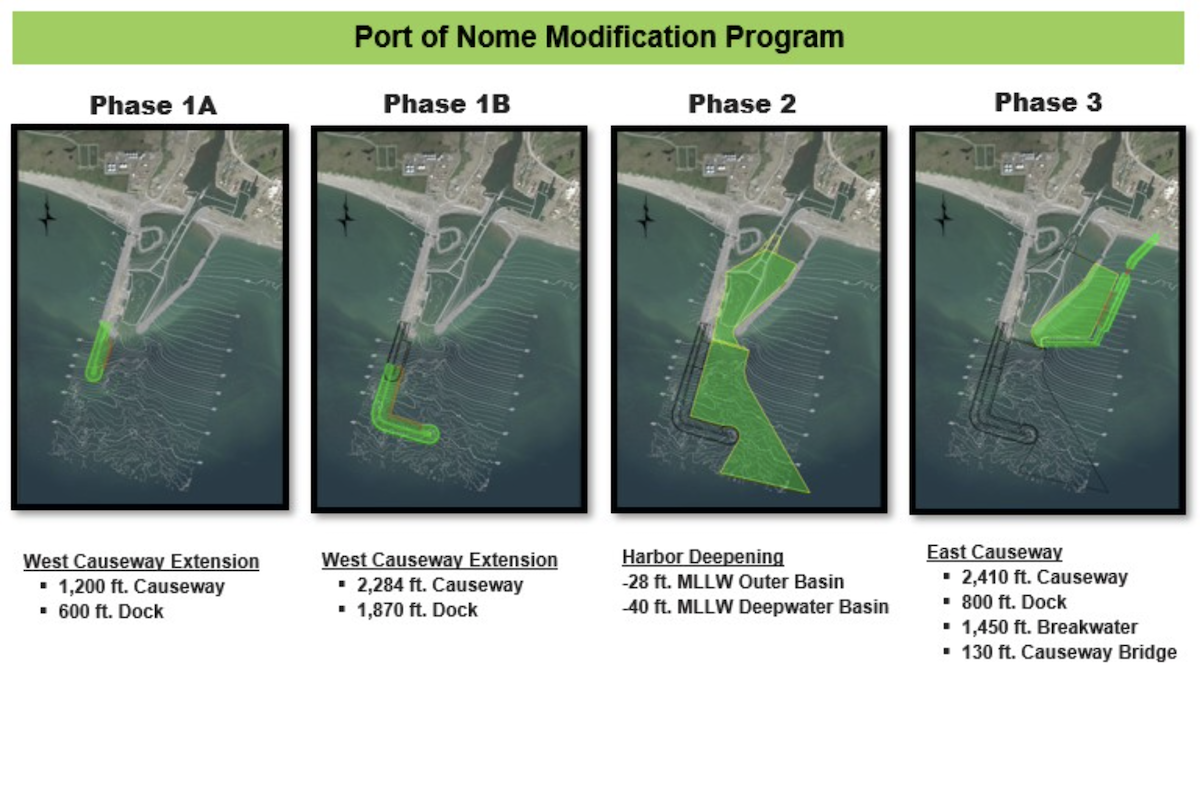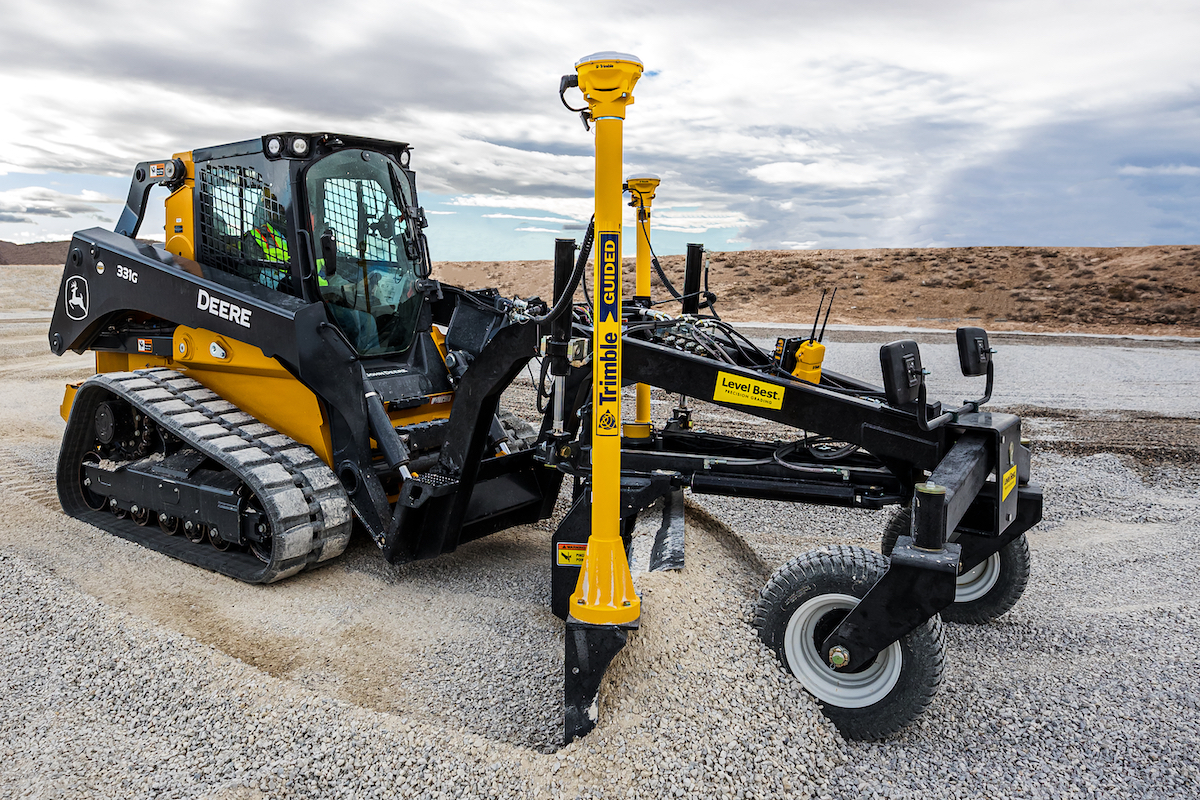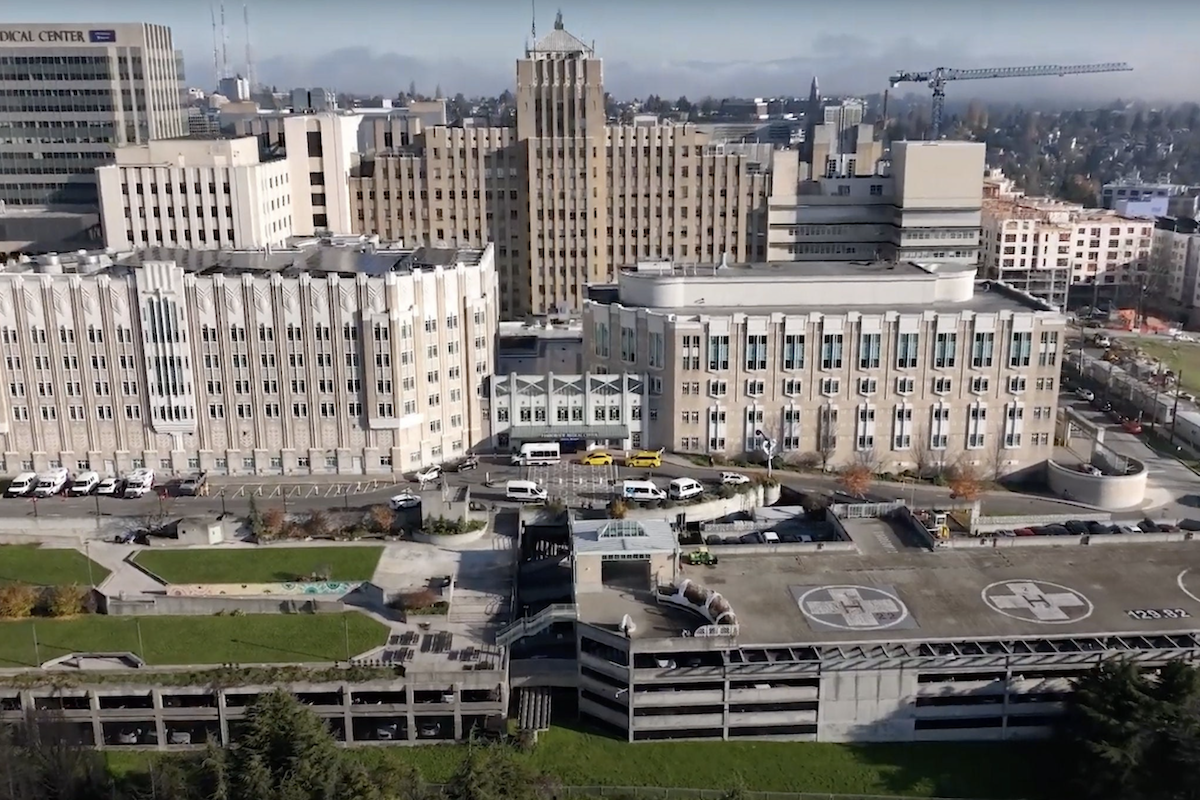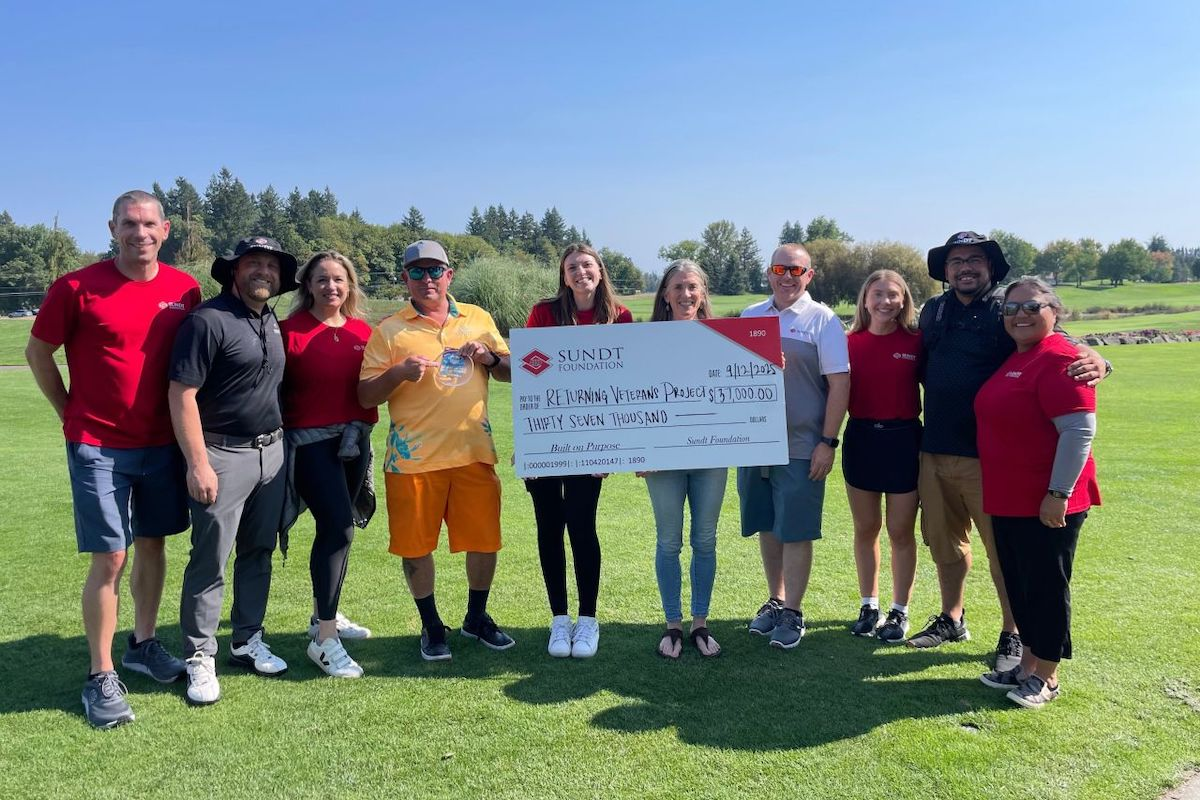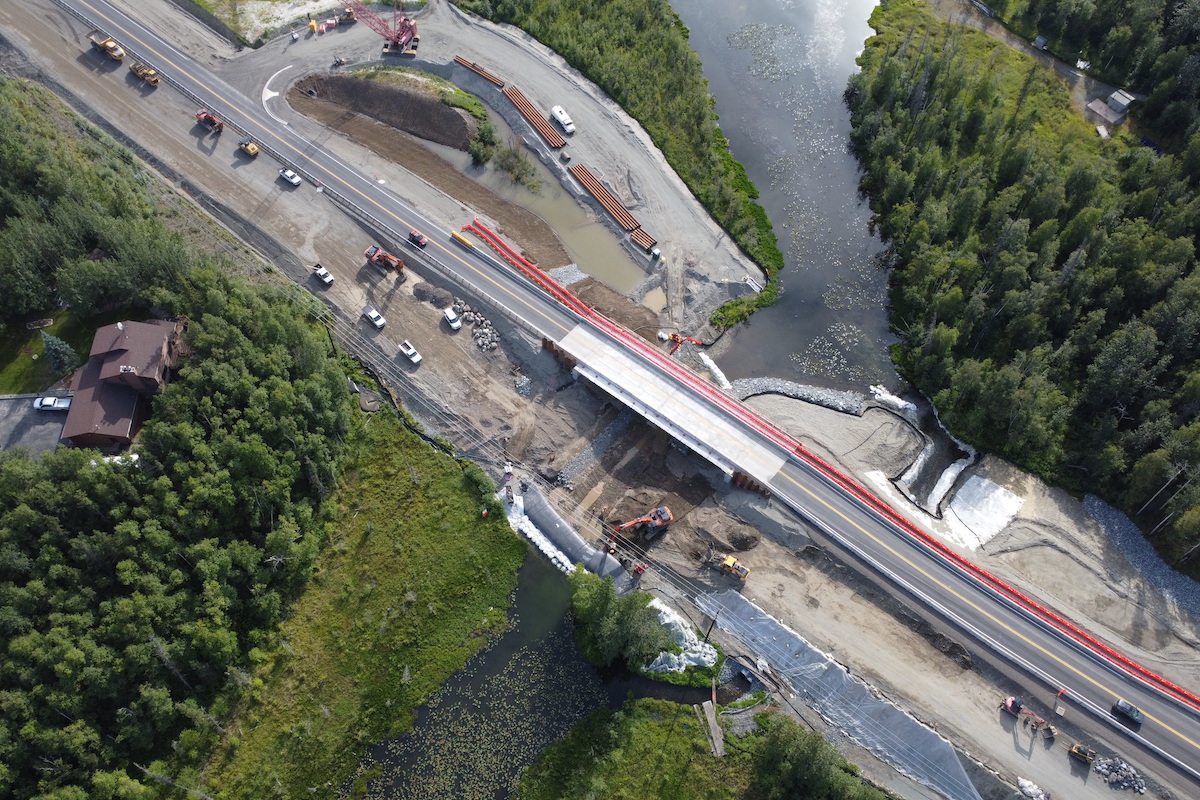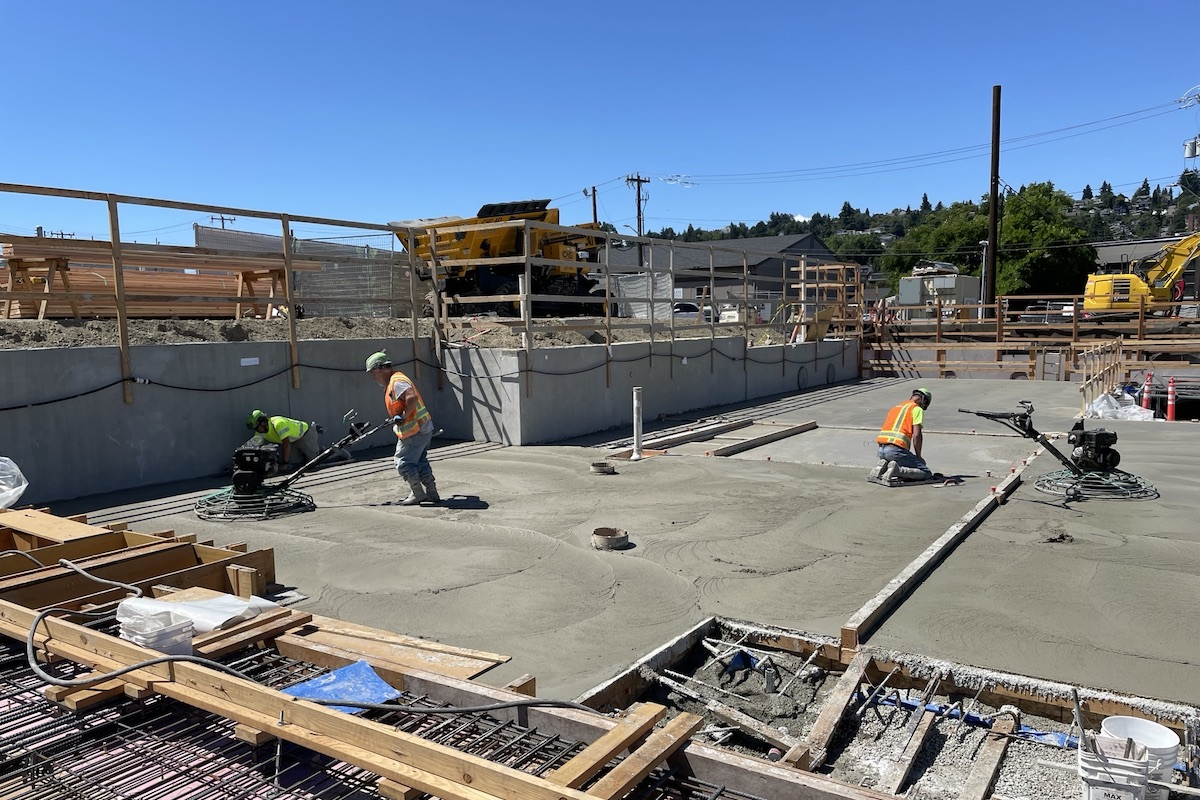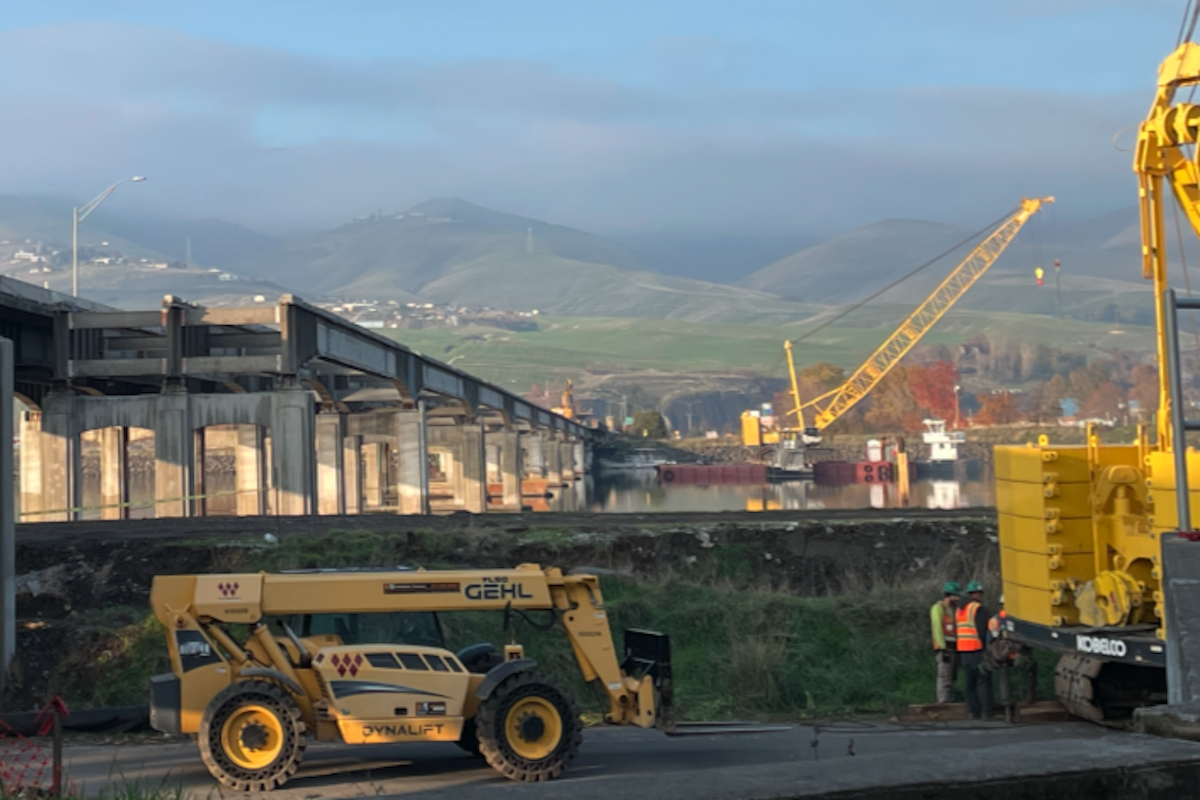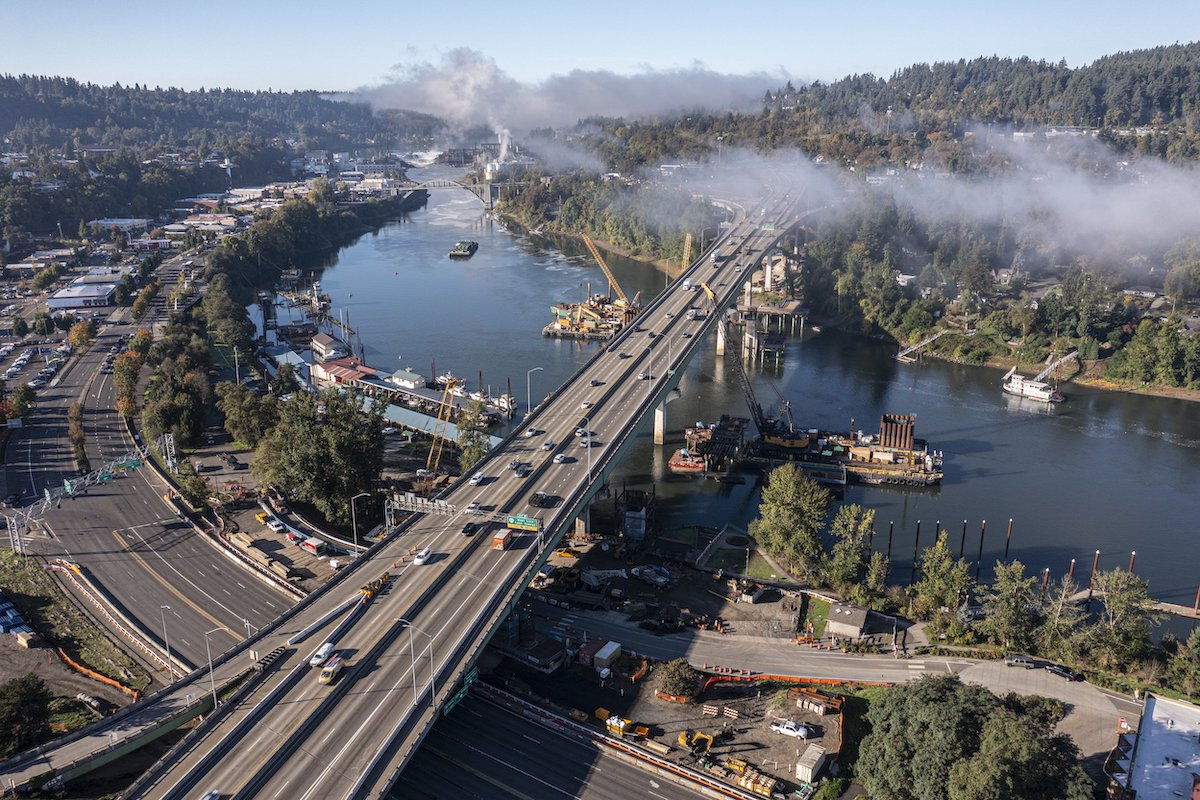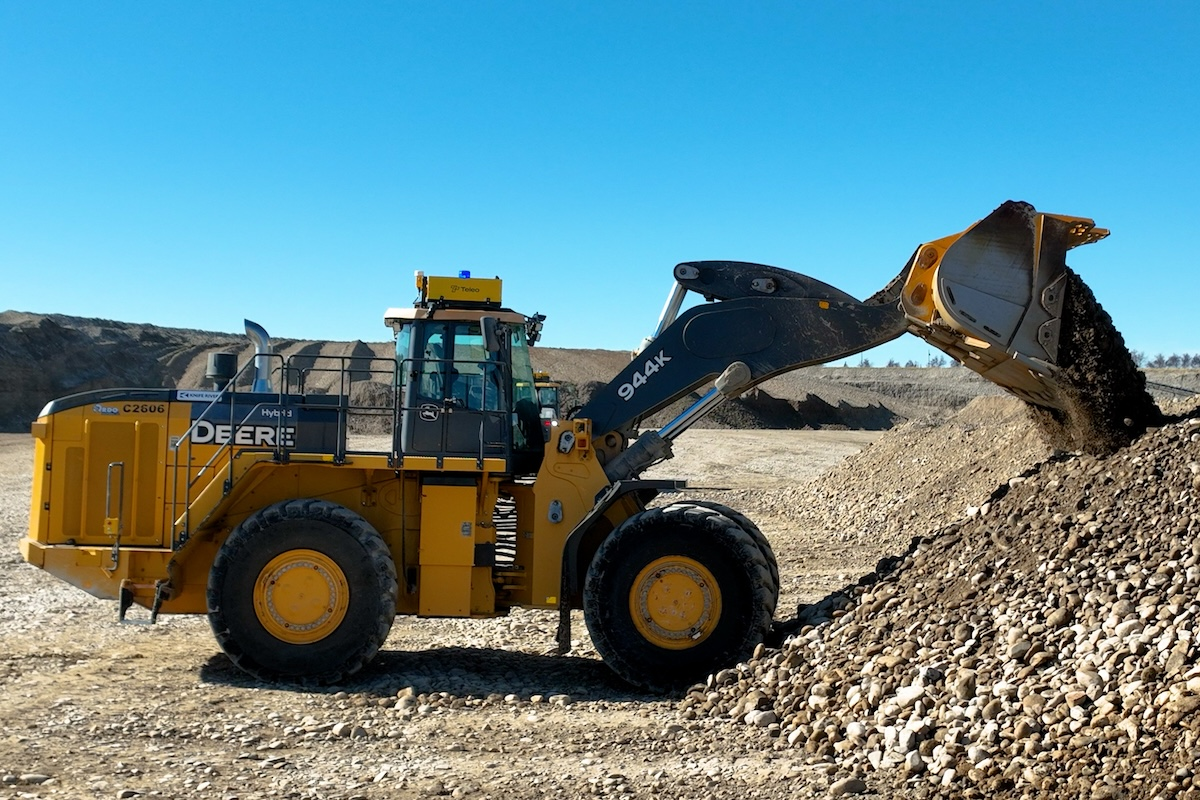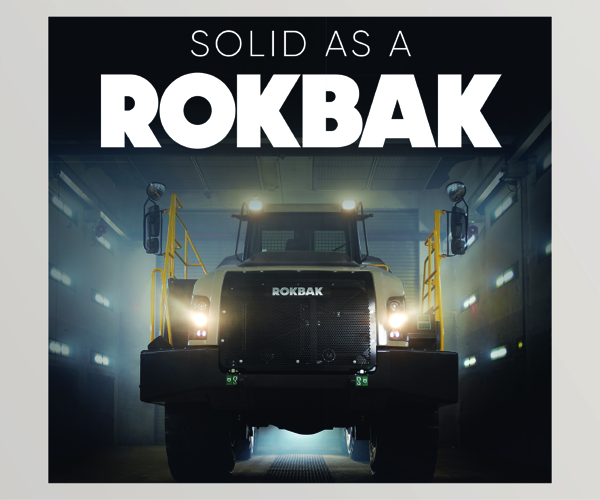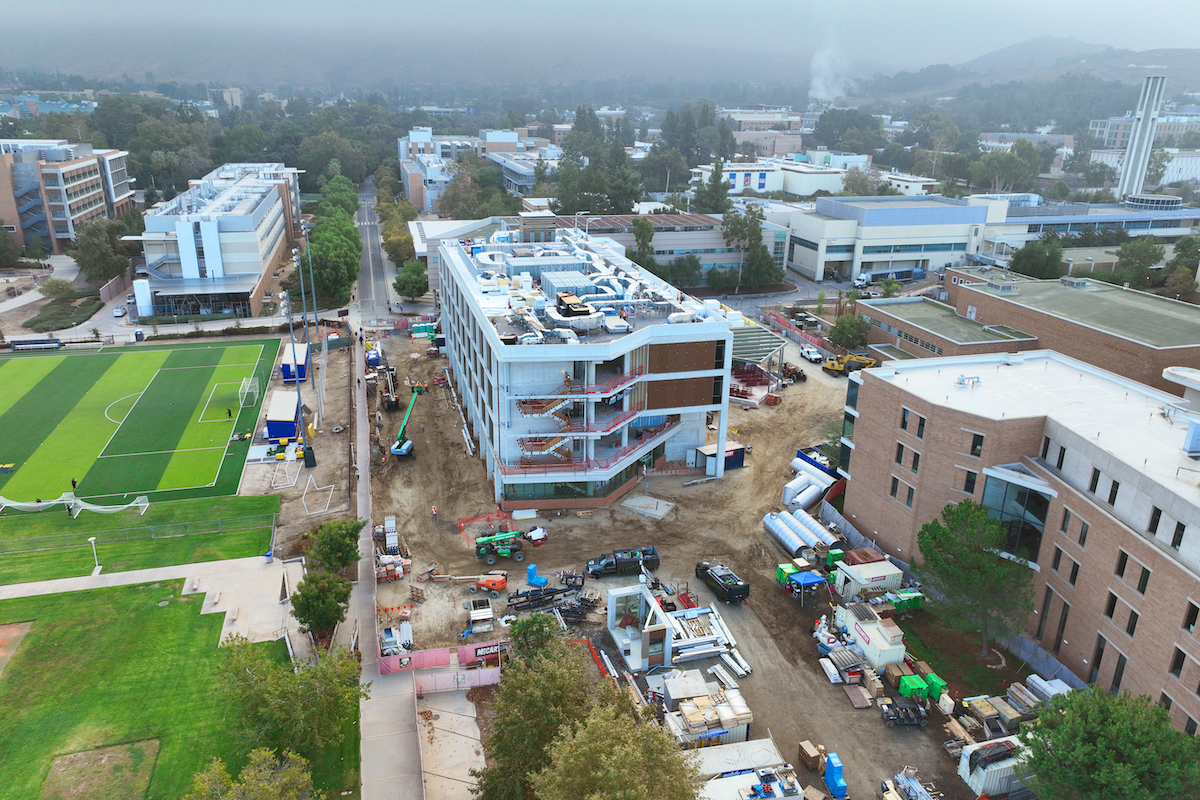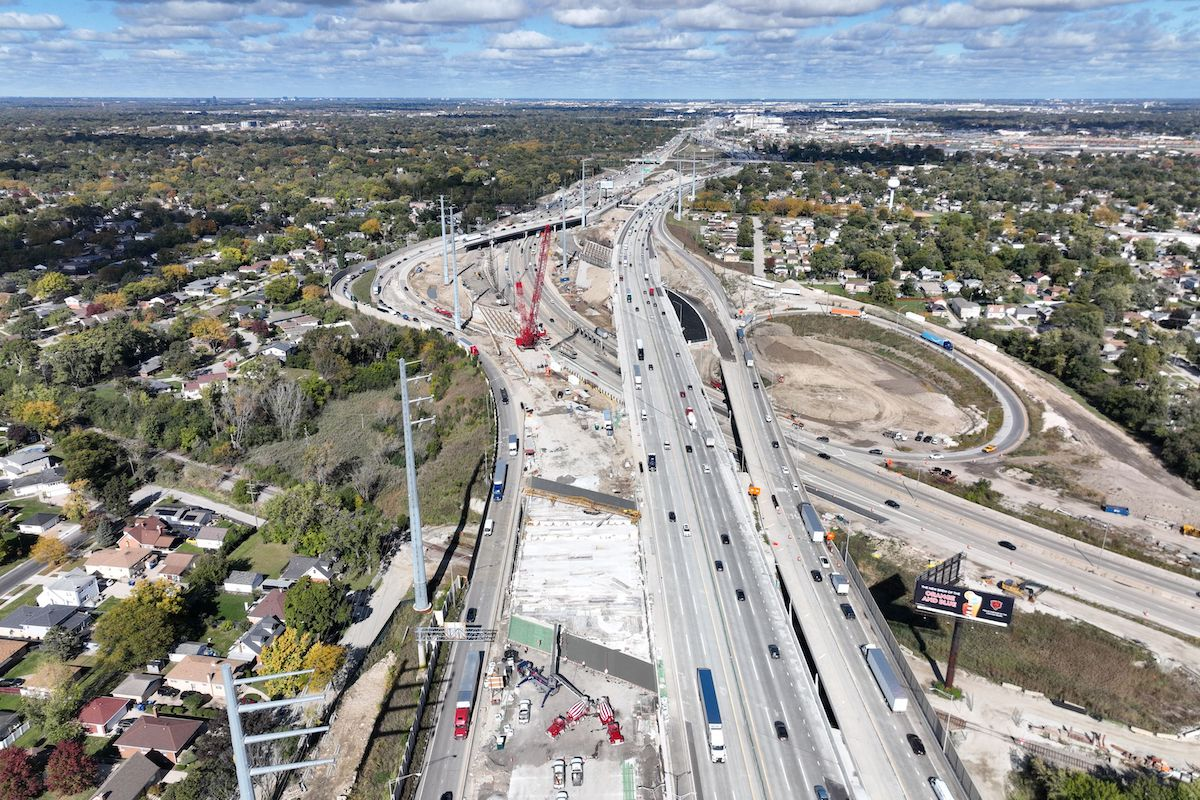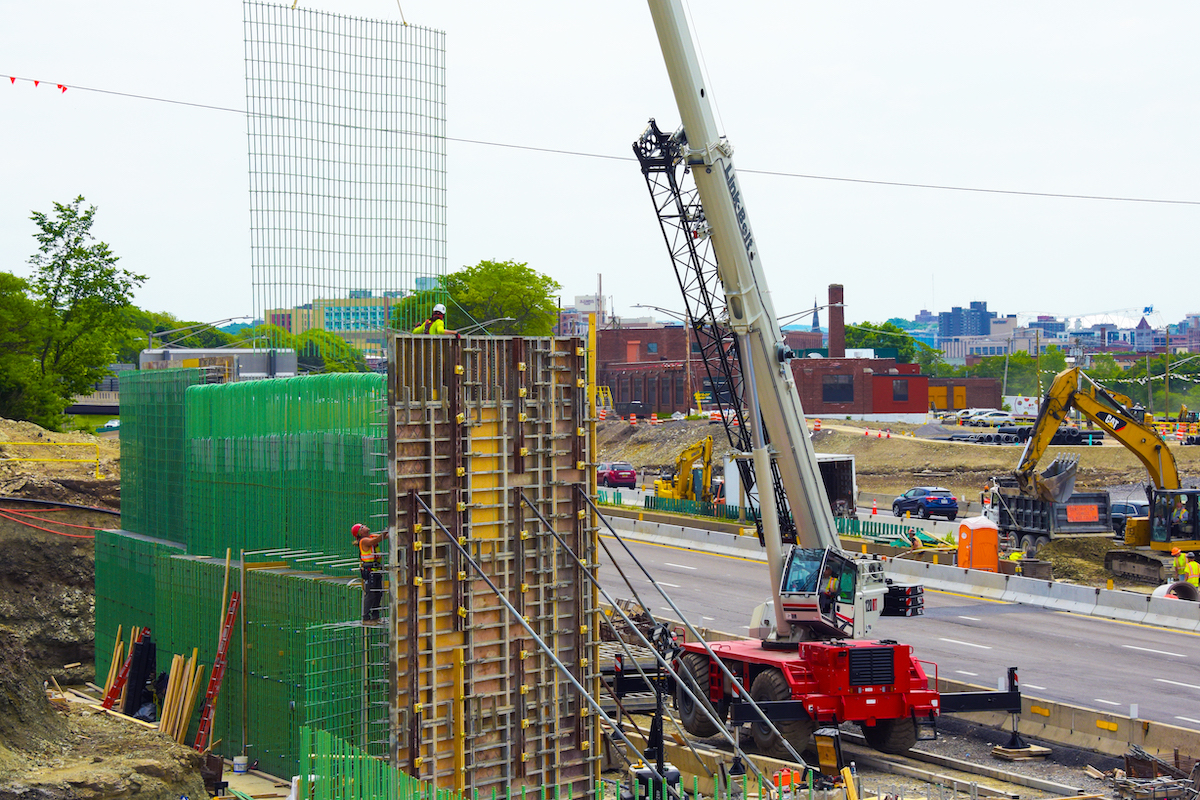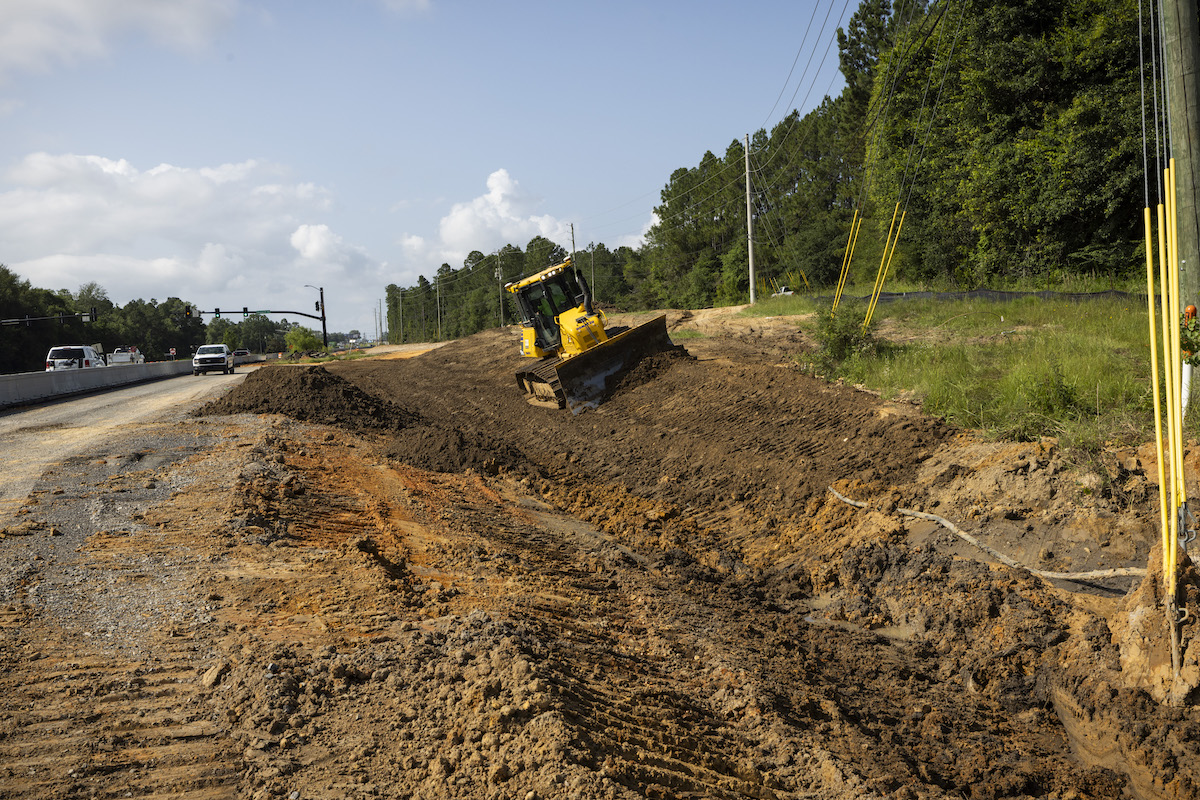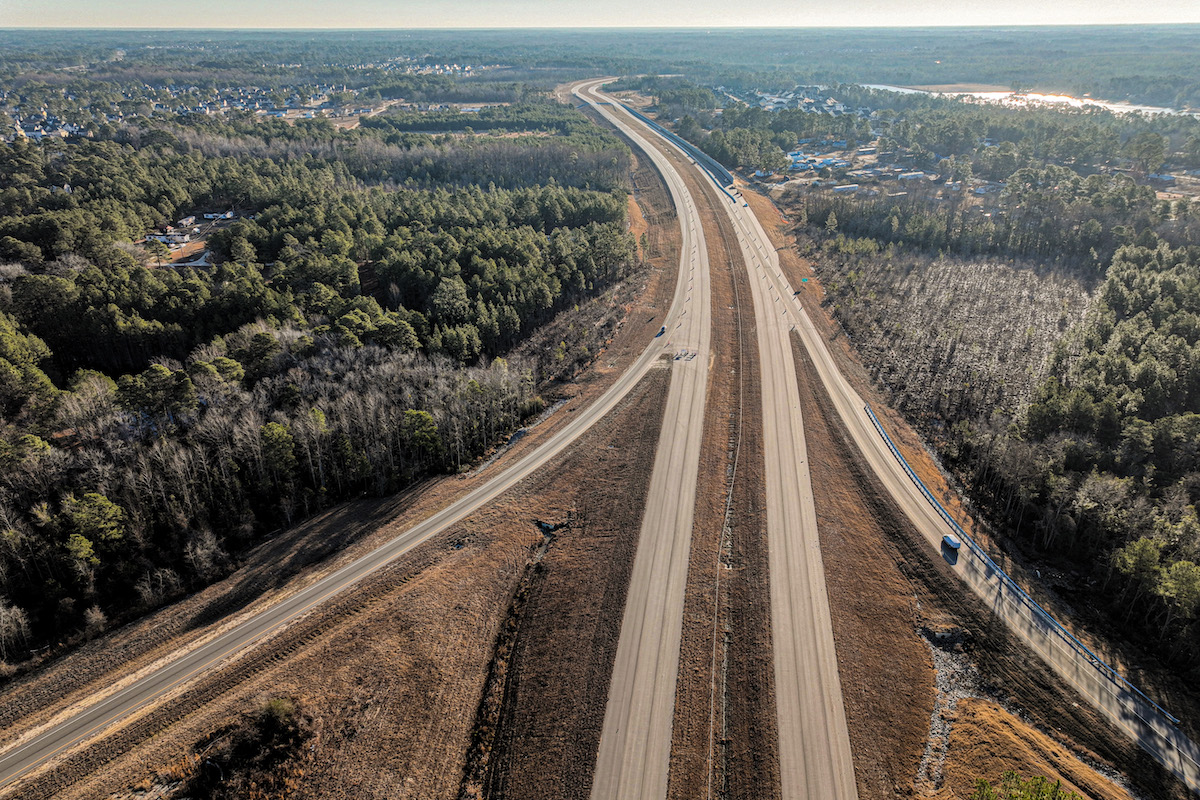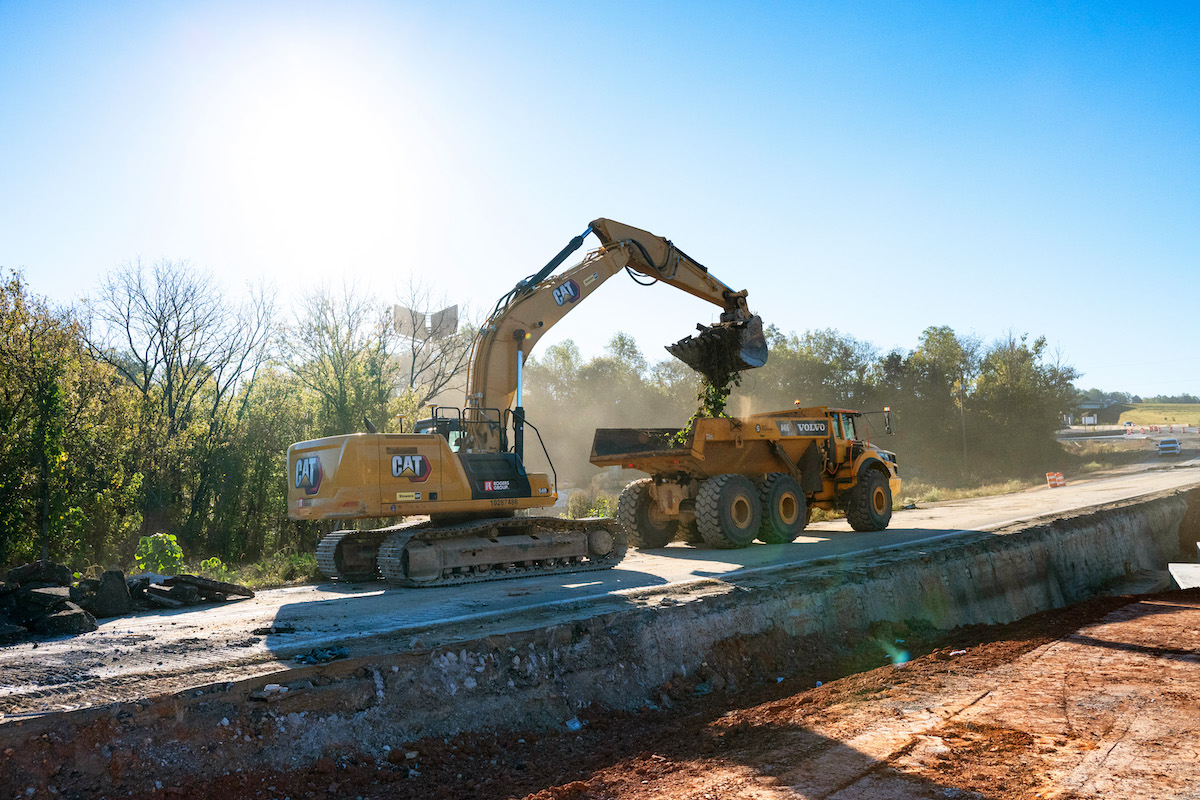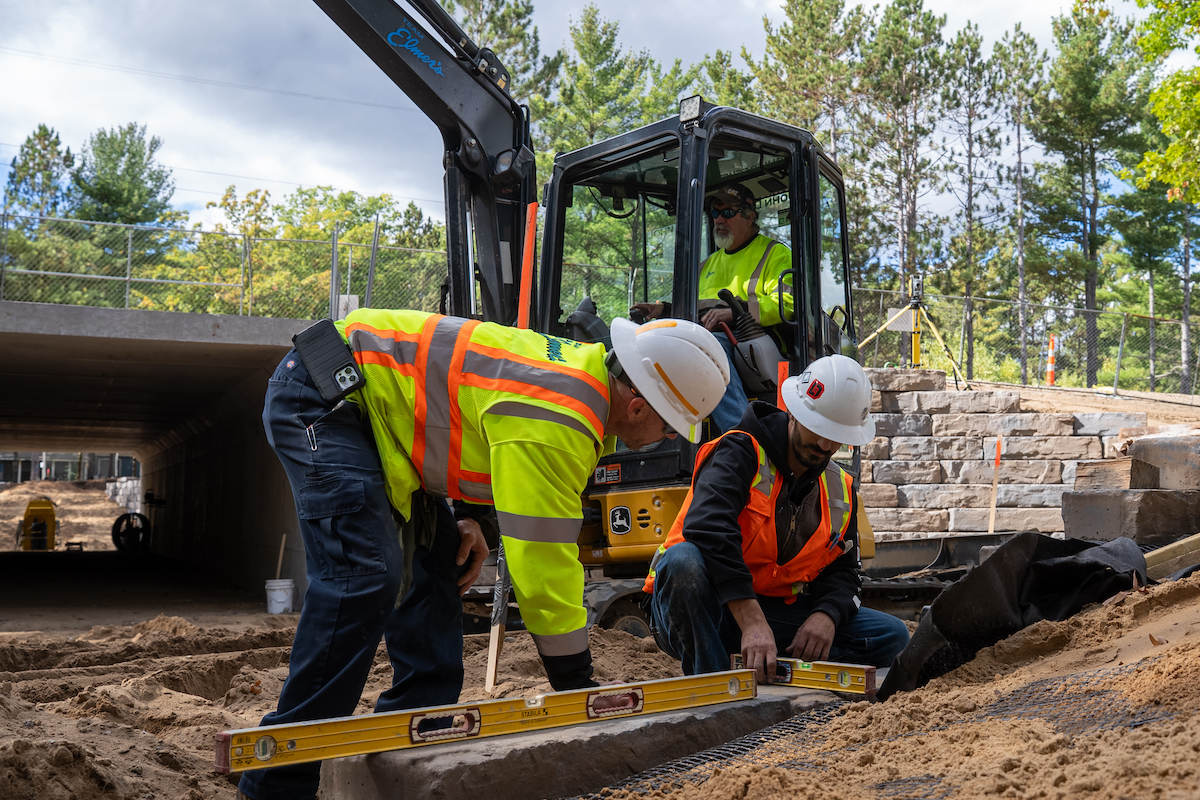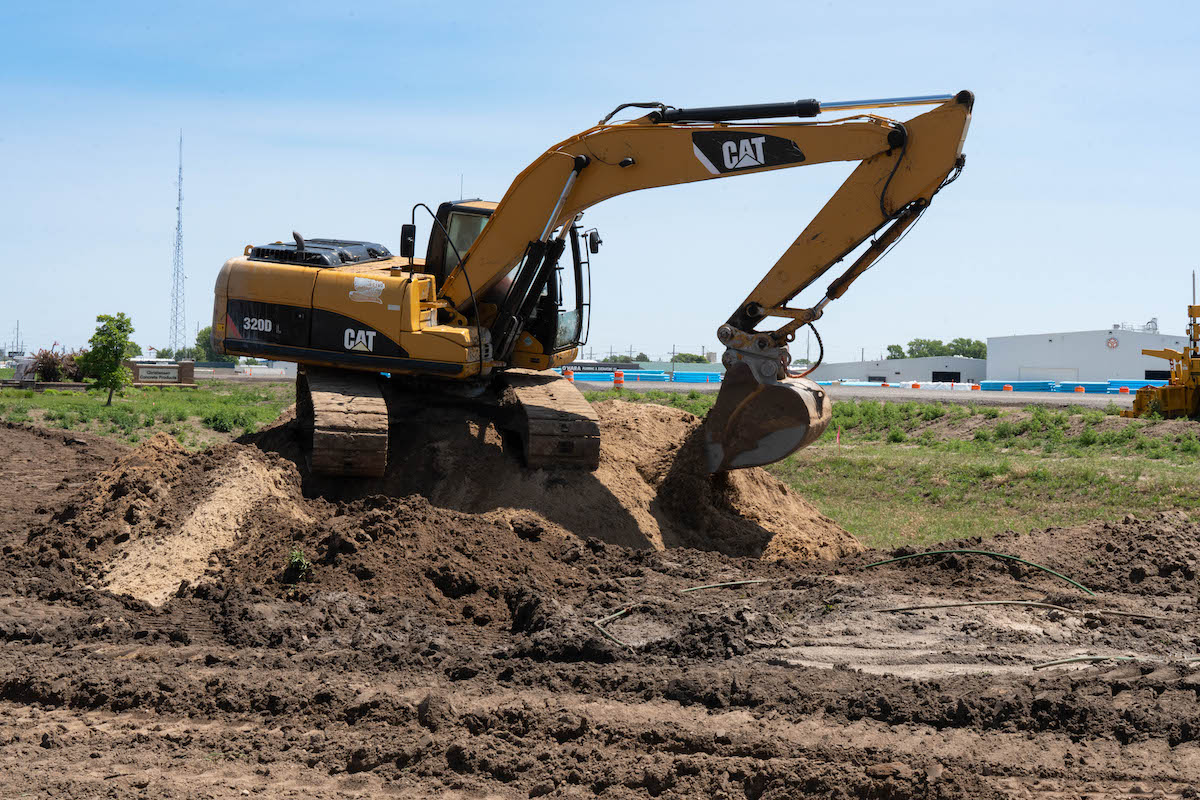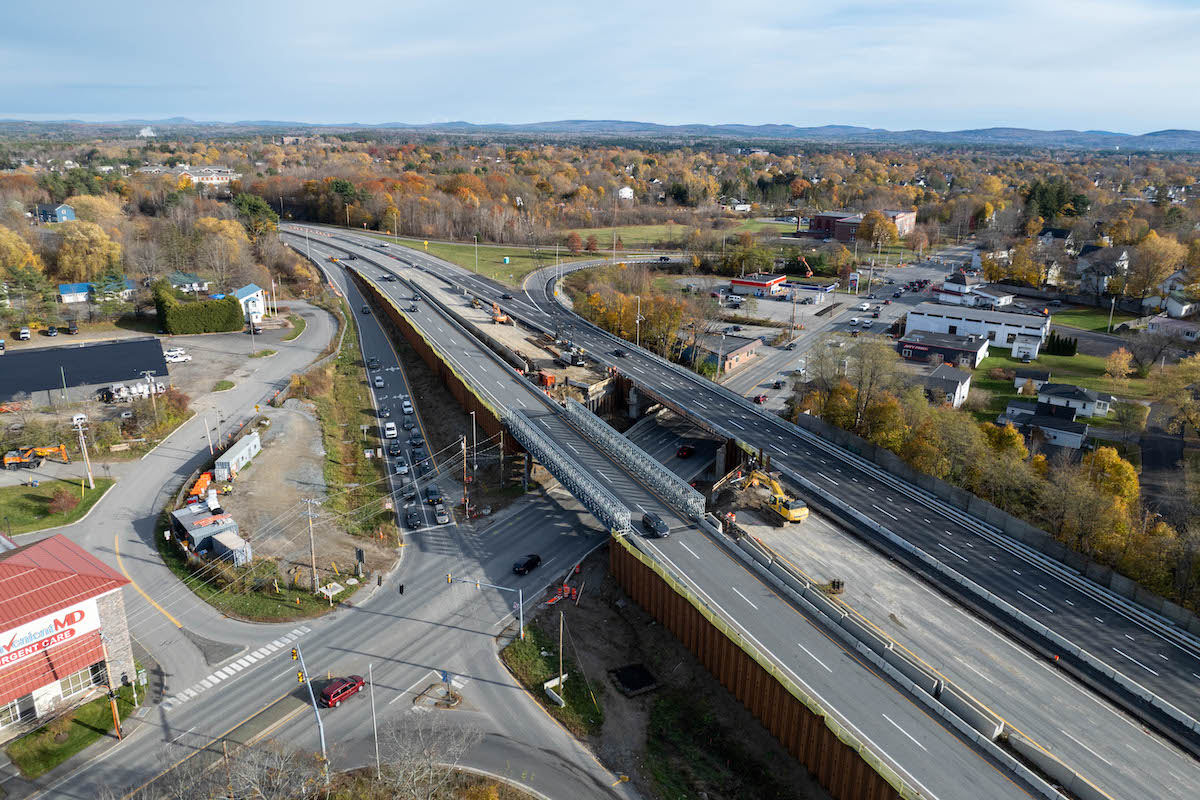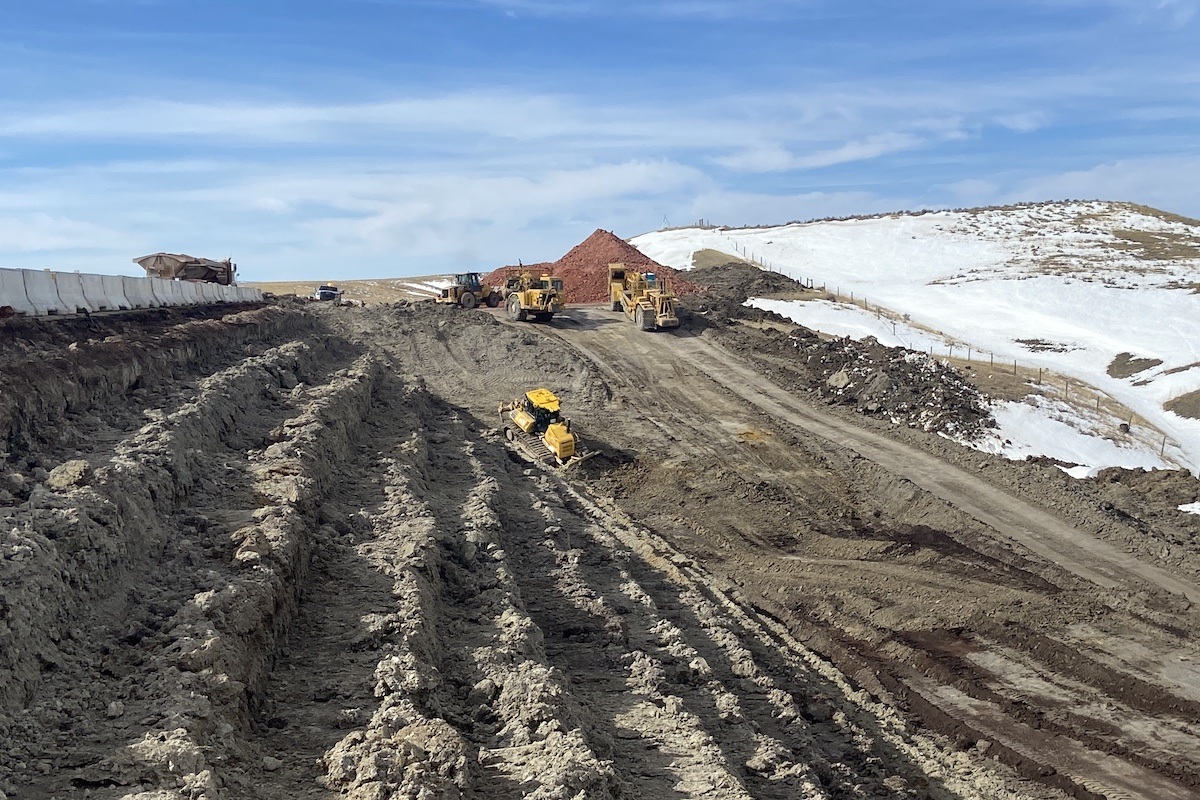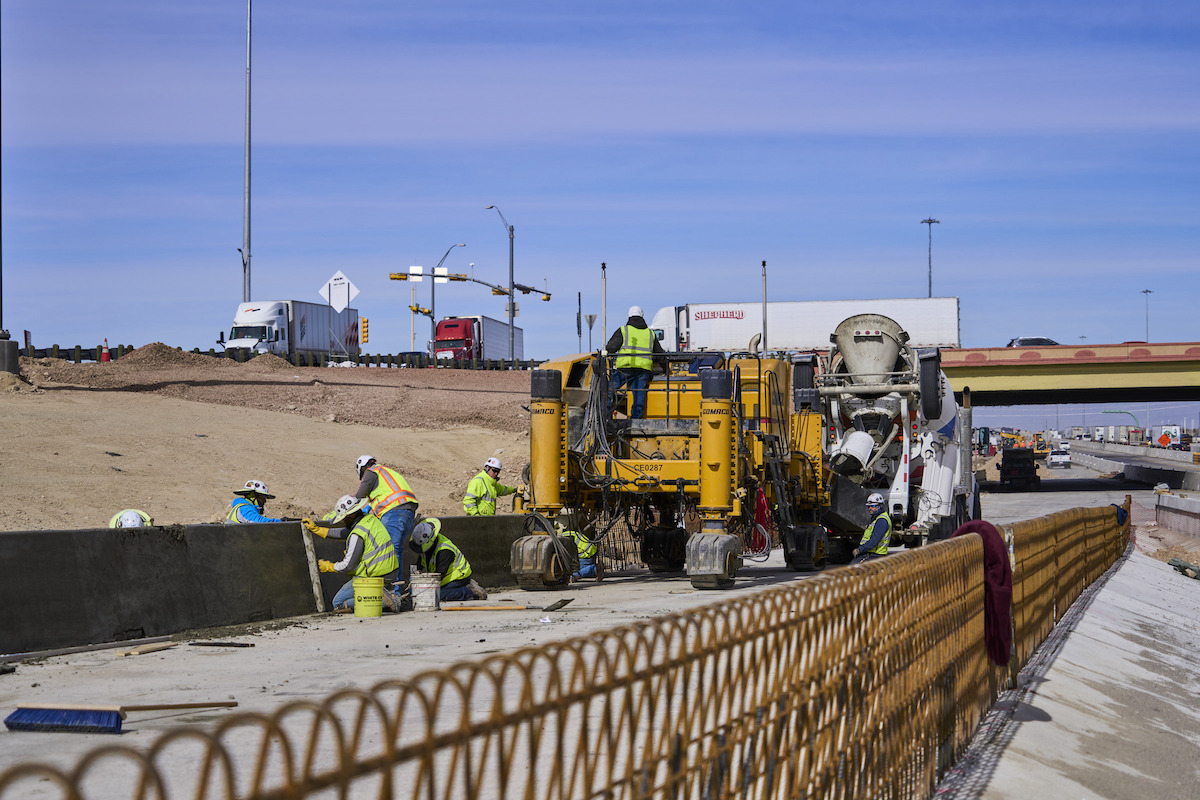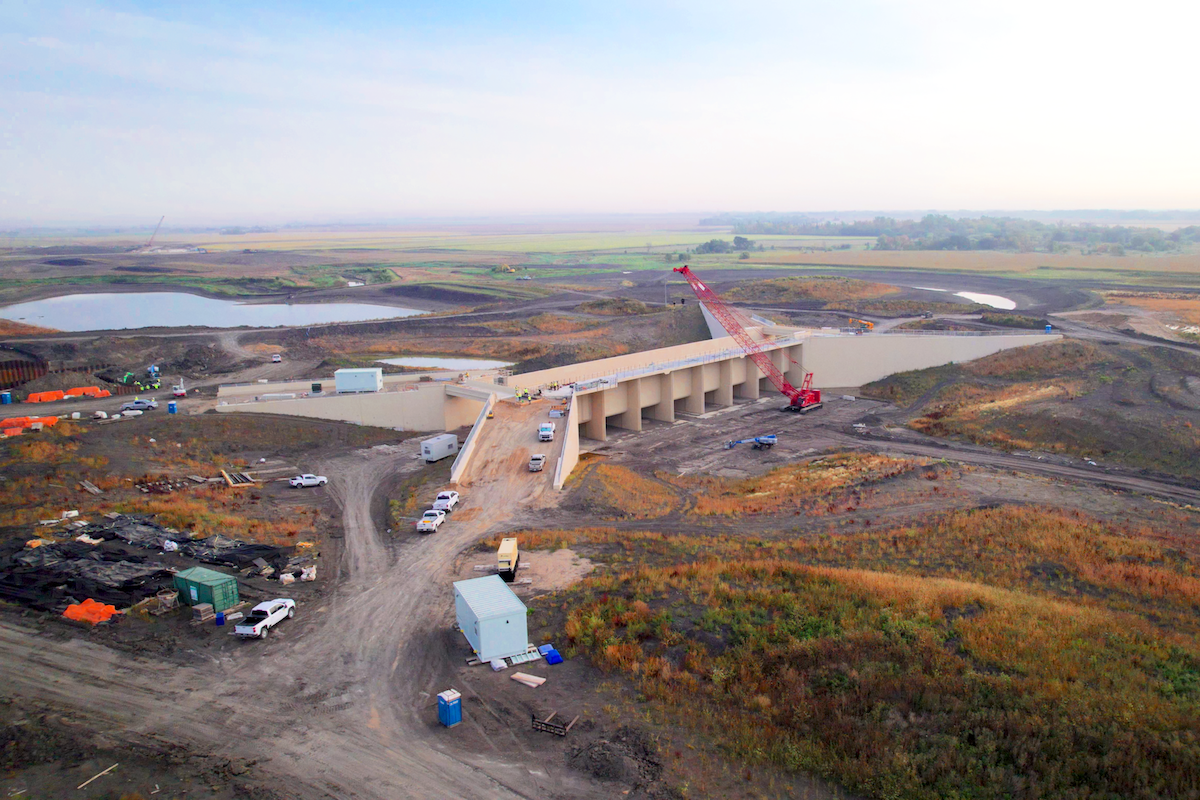Missoula, Montana-based Martel Construction has completed an extensive rebuilding effort across all activities at the Missoula Airport. The $124 million project was built out across three major phases, starting in 2019.
Major project components included new roadways, demolition of the old terminal, constructing a new 242,000-square-foot terminal (150,000 square feet in Phase 1, 81,000 square feet in Phase 2, 11,000 square feet in Phase 3), new boarding gates and bridges, and a new baggage handling system. All of these additions connect to the newly expanded parking. Final project work recently concluded on the construction of a new east concourse with a fifth passenger gate and bridge.
Passenger flights are up at Missoula Airport. The 2024 passenger count exceeded 1 million, an 11.8 percent increase over 913,198 passengers in 2023. The airport is served by six major airlines and has direct flights to 16 major markets, including Atlanta, Georgia; Chicago, Illinois; Denver, Colorado; and Seattle, Washington.
The three project phases established a complicated schedule that would maintain airport services, from passenger safety and amenities to Transportation Security Administration (TSA) security requirements. Additionally, the work had to be sequenced so that it had “off-ramps.” For example, if work had to stop due to funding uncertainties, airport operations could continue. Fortunately, funding was secured for the full scope of work, so none of the off-ramp detours were needed.
Before work could start on the new terminal, some operations had to be relocated to allow for partial demolition of the old terminal. The TSA Checkpoint and Alaska Airline’s ticketing counter were moved but stayed within the old terminal.

| Your local Superior dealer |
|---|
| Westate Machinery Co |
Next, a partition wall was built to separate the still-active terminal areas so that the newly vacated areas — the west end of the terminal building — could be demolished. The partition served as the terminal’s exterior wall for the next two and half years while the new terminal was constructed.
The first step for Phase 1 construction started with excavating nearly 1.5 acres for the new terminal’s 57,000-square-foot footprint. Building foundations were set on rammed aggregate piers to avoid settling in the clay subsoil underlying the site. Shoring was also required between the new and old terminal buildings to avoid settling where excavations extended 20 feet below grade.
Travis Marshall is the onsite Project Engineer for Martel. Marshall explained that soft, expansive clay soils at the project required a deep foundation system. Therefore, to prepare for the foundation, Martel set vertically rammed engineered aggregate piers. The clay was bored with a 30-inch auger to a depth of approximately 20 feet. Then, aggregate was pounded in.
“We installed over 600 of the aggregate piers,” Marshall said. “Most [330] were placed during Phase 1. About 290 were set in Phases 2 and 3.”

| Your local Metso Minerals Industries Inc dealer |
|---|
| PacWest Machinery |
| Westate Machinery Co |
Installation required specialty drilling and compaction equipment. In addition, independent testing and confirmation were necessary to confirm that calculated pier sizing and soil friction analyses were accurate and that, once in place, the piers would provide the required support and meet project specifications.
For safety, Martel constructed temporary walkways on the runway side of the project as people moved to and from the airplanes. High airport travel numbers required these additional boarding options.
Martel customized and linked together 40-foot shipping containers leading from the terminal door to the steps of the plane. Container doors were removed, and connections were sealed against weather. The makeshift walkways allowed passengers to move to the planes and remain protected.
The airport project started during the COVID-19 era, which set special and unusual demands.

| Your local Gomaco dealer |
|---|
| American Construction Supply |
Travis Frey was the Project Principal at the time. Looking back, he said that “COVID brought many challenges, from navigating new rules and ever-changing regulations and making sure that the job site was safe.” On the one hand, he noted, construction was slowed. On the other hand, though, the low passenger numbers allowed construction to ramp up. Some projects, such as parking expansion and road modifications, were accelerated.
COVID also impacted supply chains. “We were fortunate to be ahead of supply chain issues with our escalators, which were hit very hard by the pandemic because parts are manufactured throughout the United States and globally,” Frey said. “Ours arrived on site and on time.”
As work on the new terminal progressed, managers began planning for Phase 2, which had two parts: demolishing the old terminal and adding an 81,000-square-foot expansion — an east concourse — to the new terminal within part of the existing footprint. Again, because of COVID, Phase 2 required early procurement of materials and both onsite and offsite storage to proactively navigate delivery uncertainties.
“With Phase 2 approaching, we tried to find ways in advance to accommodate the demands of future construction,” Project Manager Cole Jensen said. “We wanted to take steps that would minimize impacts both to airport operations and the traveling public.”

| Your local Trimble Construction Division dealer |
|---|
| SITECH Northwest |
One suggestion was to construct a double wall at the “phasing line,” which would be the infrastructure in place when Phase 1 ended and teams readied for Phase 2. Because of funding uncertainties, Phase 2 faced delays, meaning that when Phase 1 work was finished, they still had to allow airport operations to continue. The double wall served as one of the project’s “off-ramps,” so the exterior portion would be in place if funding fell short.
However, Martel completed the interior section of the double wall so it would be ready to connect with the new east concourse planned in Phase 2, within the footprint of the demolished terminal.
“Fortunately, project funding became available,” Jensen said. “We were ready to go because the structural steel and floor slabs of the Phase 1 building were in place. When Phase 2 construction started, we kept just one part of the double wall to serve as a safety barrier. Then when Phase 2 construction was finished, the two sections were ready to be joined.”
Another forward-looking move by Martel was building conduits for electrical wires and data cables needed in Phase 2. Wires and data cables were pulled through after completion of the conduit runs.

| Your local Somero dealer |
|---|
| American Construction Supply |
“By doing this during Phase 1, we avoided working in this space when it would be occupied,” Jensen said.
Phase 2 started in 2022 when the new terminal was complete, and terminal activities were relocated.
Again, Phase 2 work started with demolition. Contractors knew asbestos was in the old building. Martel called in two specialized contractors: one team for removal and a separate team to inspect, monitor, and confirm removal and containment.
Yet another new issue was that the work site was close to the active airfield, and tear-down required specific planning to ensure that debris was not blown beyond boundary areas. Preventive measures included scaffolding and nets on portions of the building to control dust and debris.

| Your local Bobcat dealer |
|---|
| Pape Material Handling |
“FOD [foreign object debris] cannot leave the construction site,” said Mike O’Masters, site Superintendent for Martel. “Clean up measures extended to a surgical level. We were required to keep the demolition site spotless.”
The demolition subcontractor, Elder Demolition, recycled or repurposed the majority of the building, including the concrete foundation which was crushed and reused for non-structural backfill. Elder Demolition estimated that 70 to 80 percent of the concrete, steel, and wood were sorted, processed, and recycled.
New construction consisted of many of the same elements as Phase 1. However, there were new challenges. Crews had to work within a reduced laydown area as well as the shared wall separating the newly finished terminal.
Additionally, activities needed to be coordinated with airport operations, requiring daily communication with airport stakeholders, other contractors, and the design team.

| Your local Volvo Construction Equipment dealer |
|---|
| PacWest Machinery |
Two additional Phase 2 challenges included installation of new electrical service and adding two new jet bridges. Both tasks required extensive coordination among construction teams and airport managers. O’Masters was on point for Martel for this phase of the project.
The power tie-in required a mandatory shutdown of one of the primary power feeds into the airport, impacting jet bridges, interior terminal lights, and airport operation spaces.
“Due to the length of time needed for the shutdown, we didn’t have enough time to work between the last flight of the evening and first one in the morning,” O’Masters said. “So, we developed a plan to change the power routing of the interior loads so that airport operations could keep running.”
Liberty Electric worked as a subcontractor. The terminal is powered by the local utility. Plus, 100 percent of the power is backed up by four emergency Caterpillar generators. Liberty selectively rerouted service to an alternate power feed so that lights and power stayed on, but the new work stayed safe for installing the main power feed required in the new east concourse.

| Your local Superior dealer |
|---|
| Westate Machinery Co |
Installing the two jet bridges required coordination with airport flight schedules to avoid conflicts with parked aircraft. O’Masters explained that when the jet bridges are craned into place, the telescoping bridge section must be fully extended to complete the installation.
“With the location of the Phase 2 bridges, this full extension caused each bridge to extend into the frequently used aircraft parking locations,” O’Masters said. “We were able to time our installation work with lulls in the airport flight schedule. This allowed for both bridges to be installed without any impact on the airport schedule or the traveling public.”
Finally, in May 2025 all major tasks were complete. The new terminal and the new concourse area were ready to open and work as one space.
“We dealt with a pandemic,” Jensen said. “We didn’t disrupt one flight. The airport set record passenger enplanements. And we rebuilt a big part of the airport.”

| Your local Superior dealer |
|---|
| Westate Machinery Co |
- Demolition: Elder Demolition, Portland, Oregon
- Civil: Knife River, Missoula, Montana
- Structural Steel: TrueNorth Steel, Fargo, North Dakota
- Framing and Drywall: RDJ Brothers, Bigfork, Montana
- Phase 2 - Plumbing & Mechanical: Garden City Plumbing & Heating, Missoula, Montana
- Electrical: Liberty Electric, Missoula, Montana
- Metal Siding: Metalworks of Montana, Missoula, Montana
- Ceilings: Performance Contracting, Inc., Spokane, Washington
- Glazing: TC Glass, Great Falls, Montana
- Fire Suppression: Montana Fire Sprinklers, Missoula, Montana
- Phase 3 - Plumbing & Mechanical: Temp Right Service, Missoula, Montana
- Elevators and Escalators: KONE, Helena, Montana
- Jet Bridges: Oshkosh, Roy, Utah
- Flooring and Tile: Great Floors, Missoula, Montana
- Telecom and Network Cabling: We Connect Montana, Las Vegas, Nevada
- Painting: SPS Painting, Lolo, Montana
- Rebar: Harris Rebar, Burbank, Washington Photos courtesy of Martel Construction

